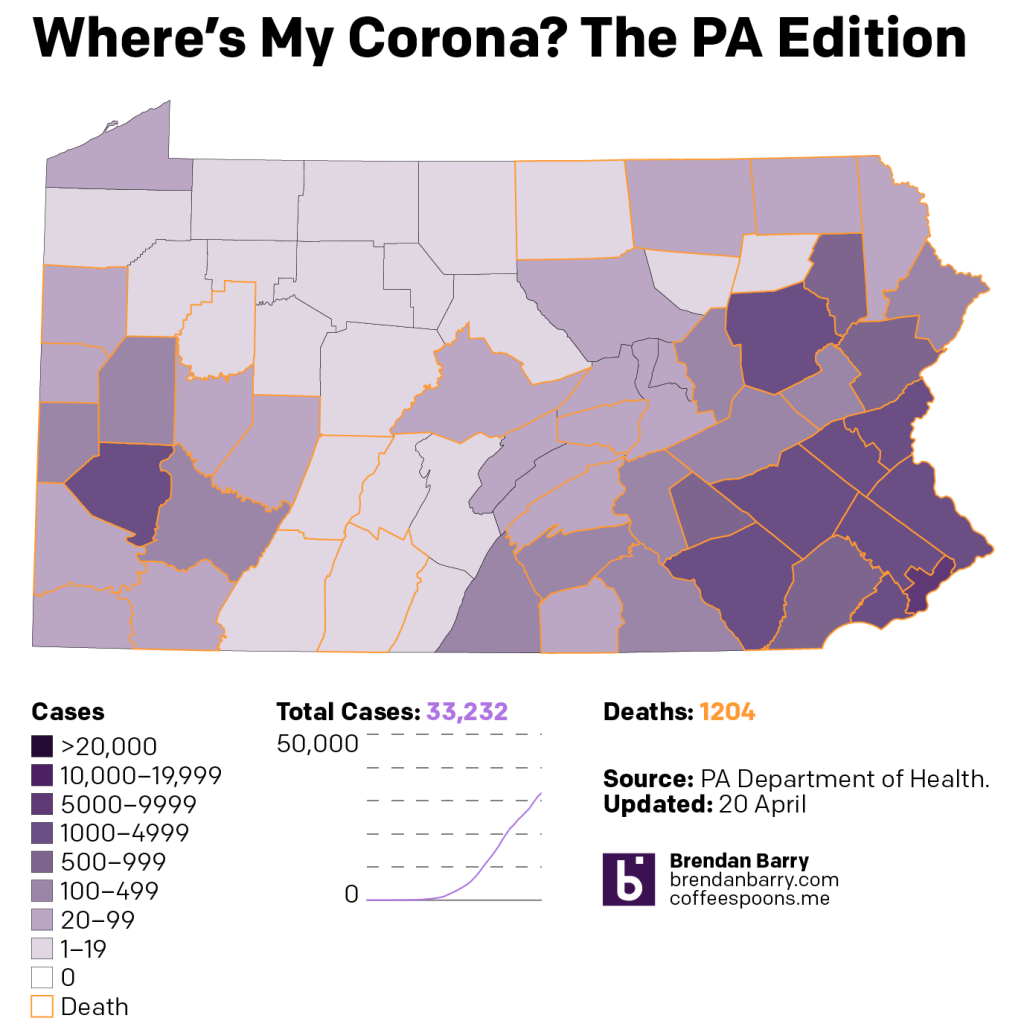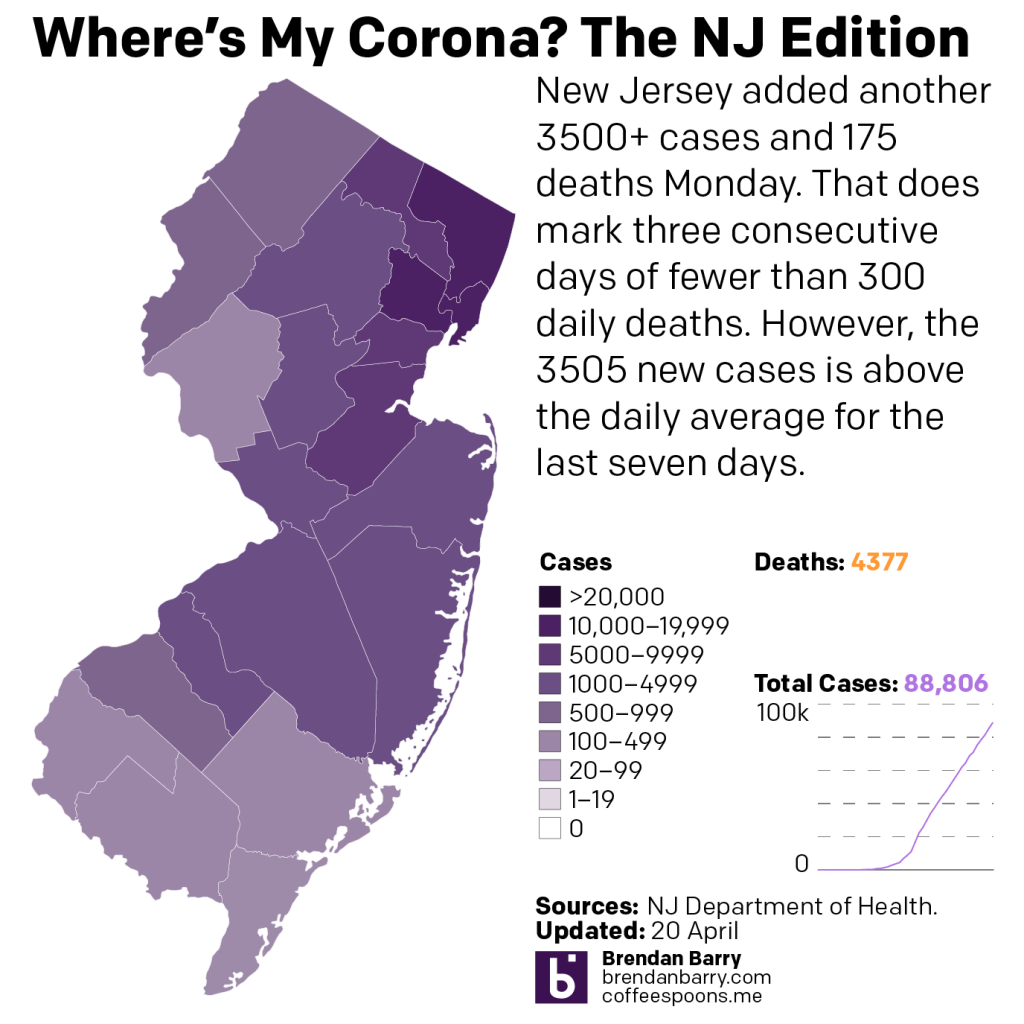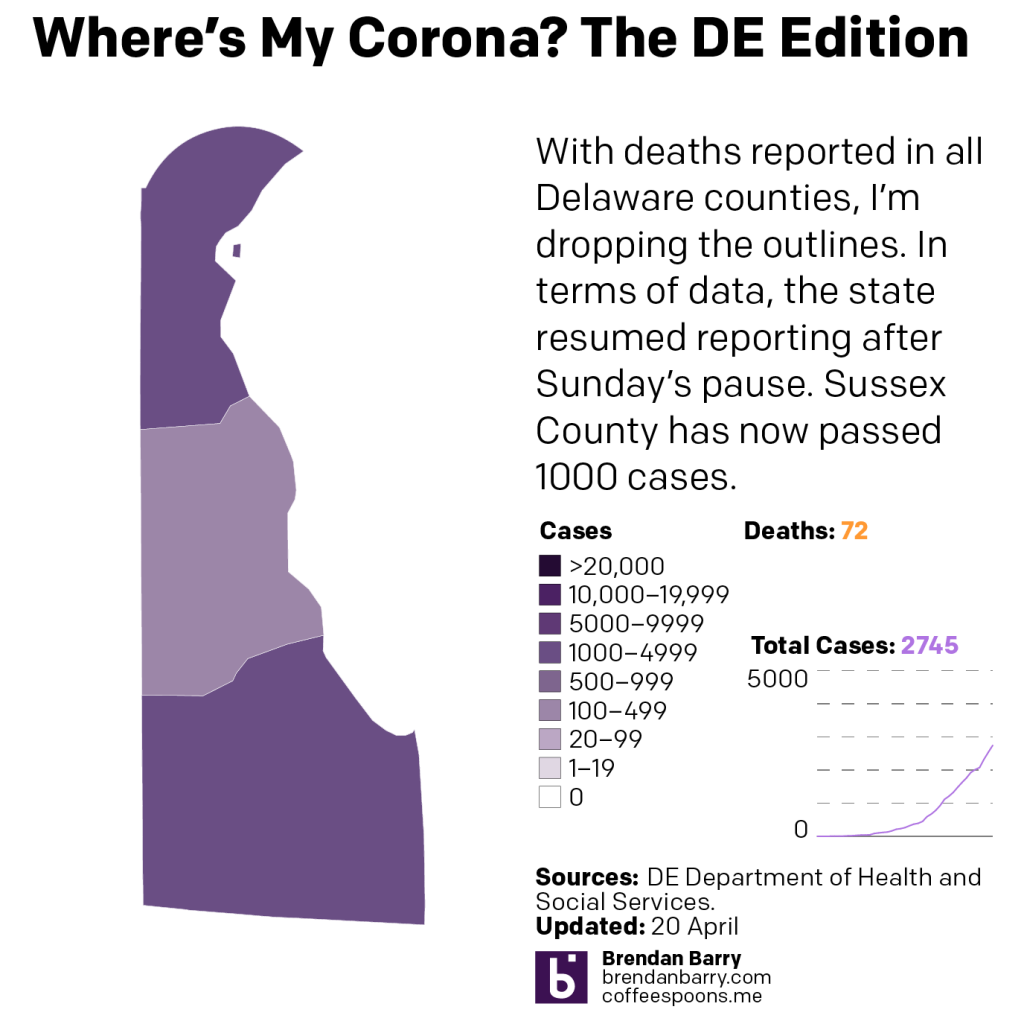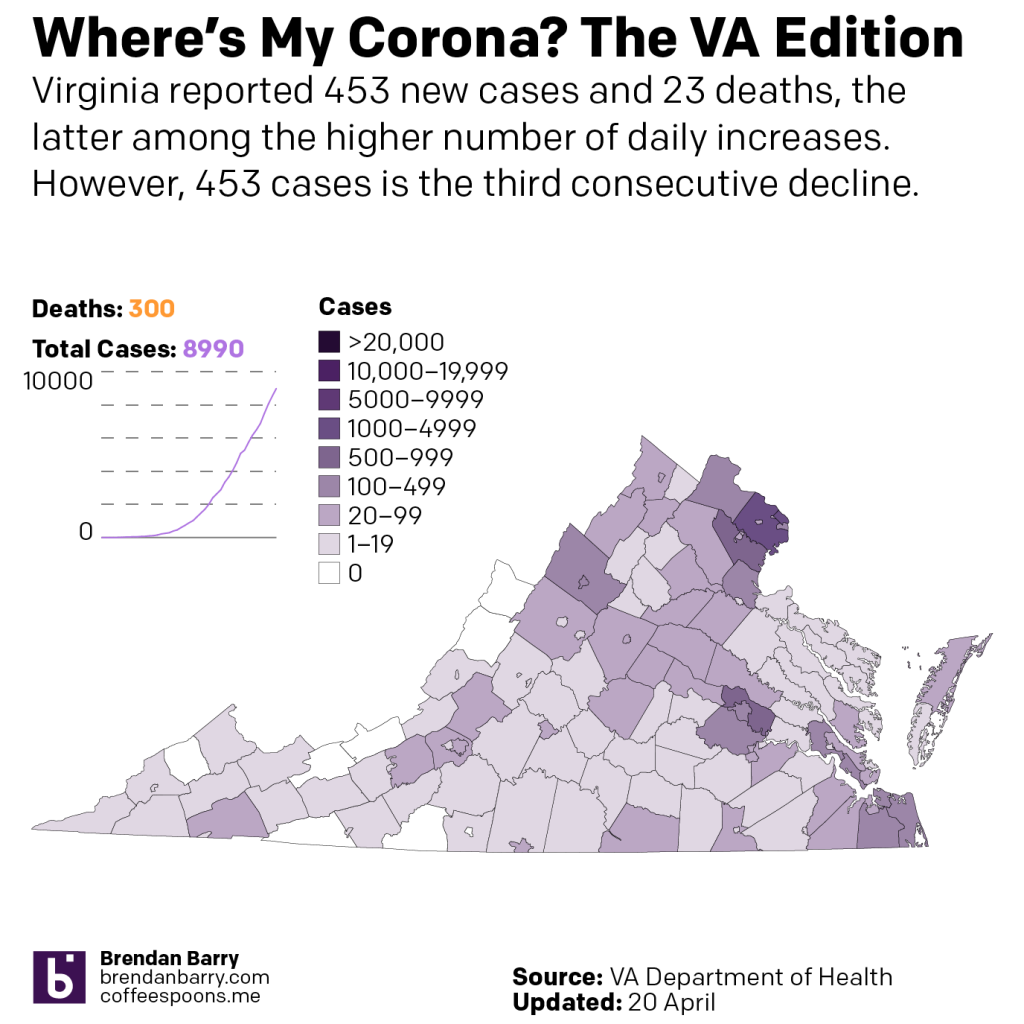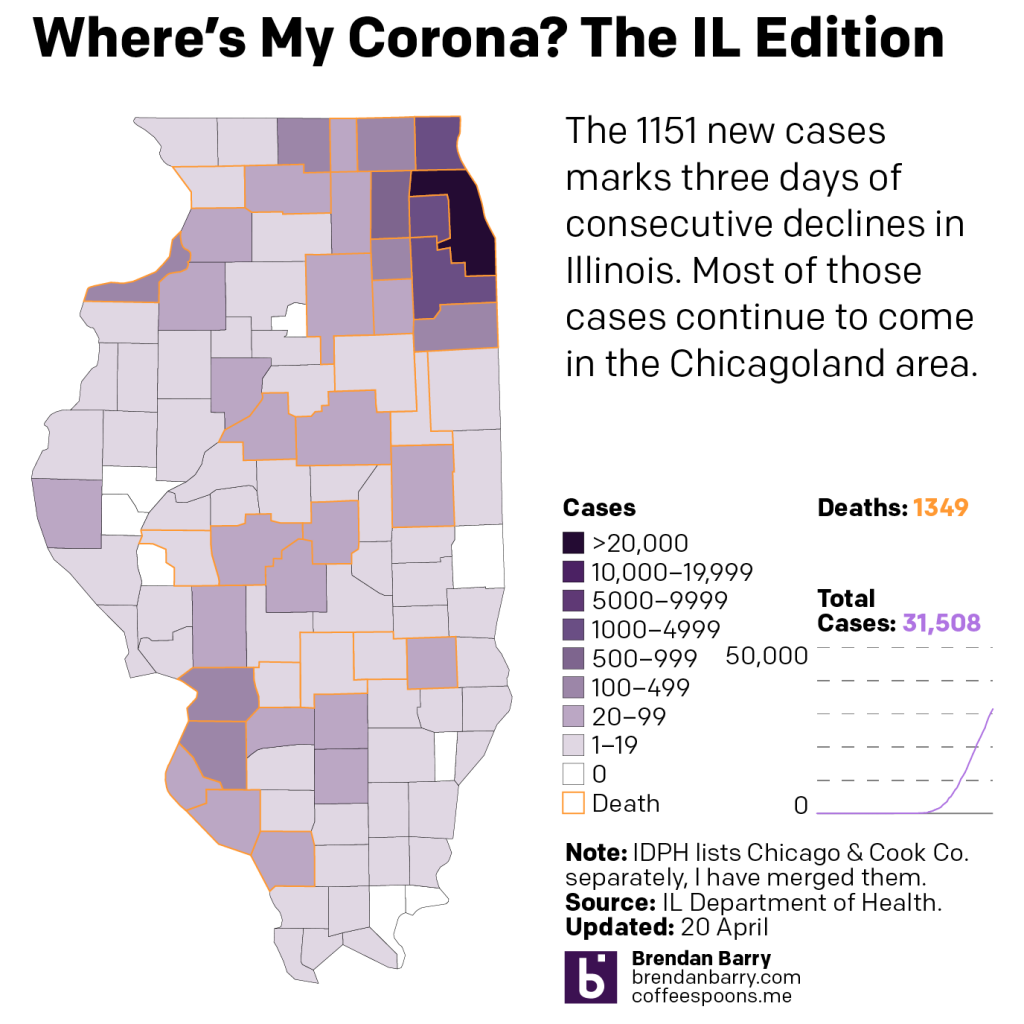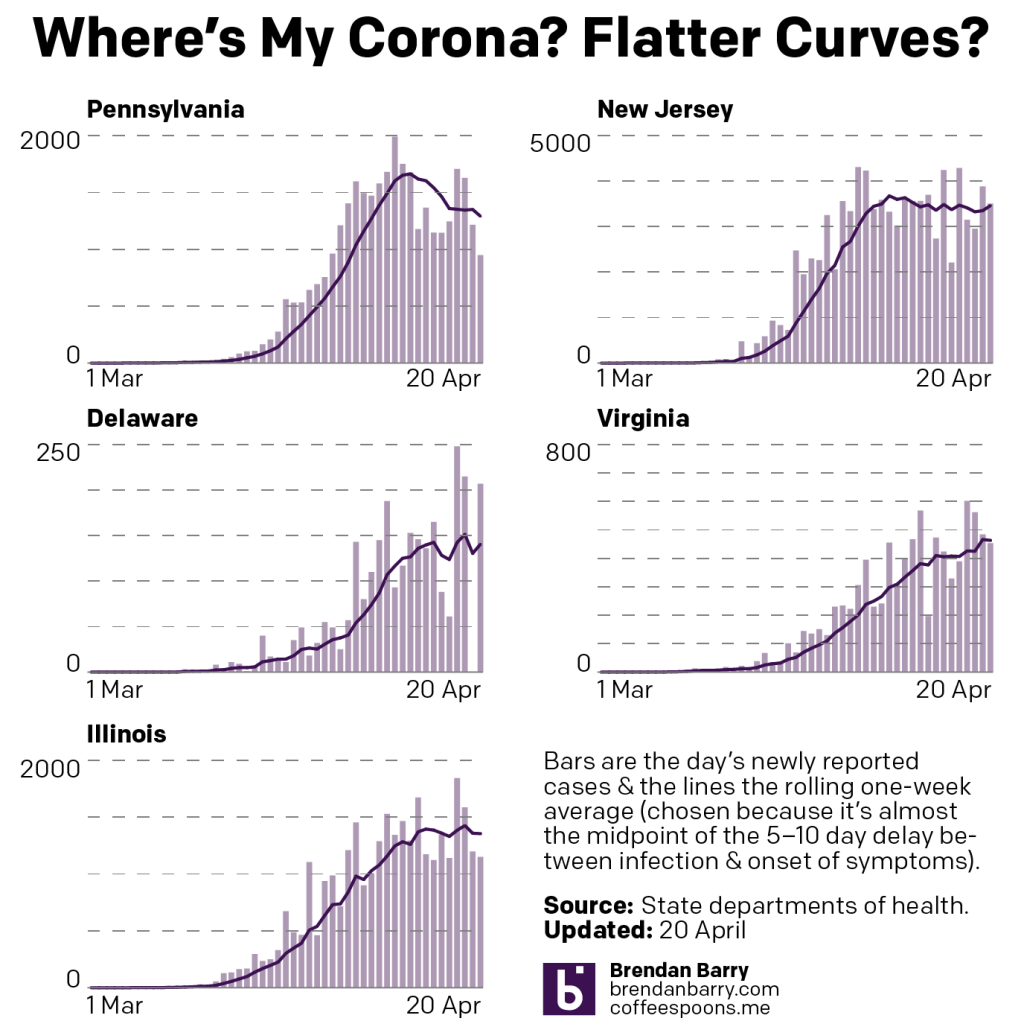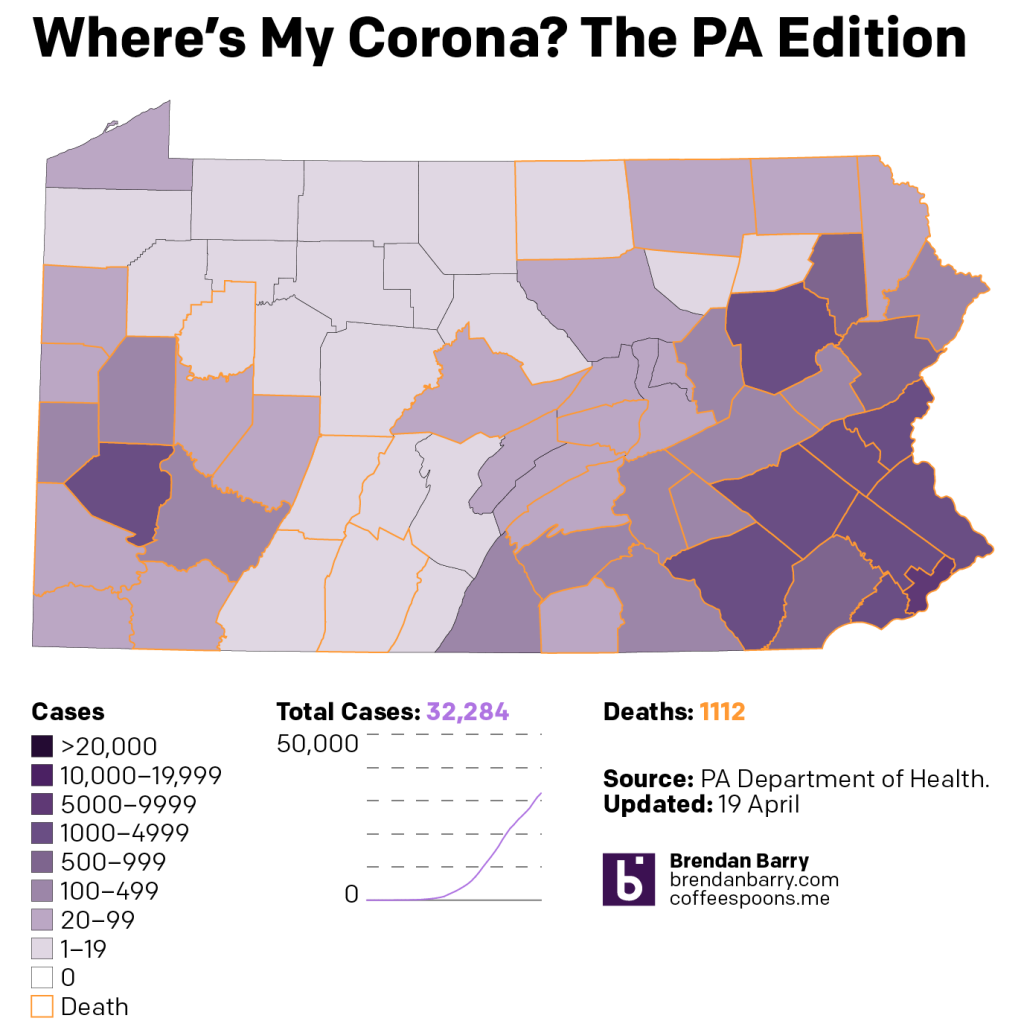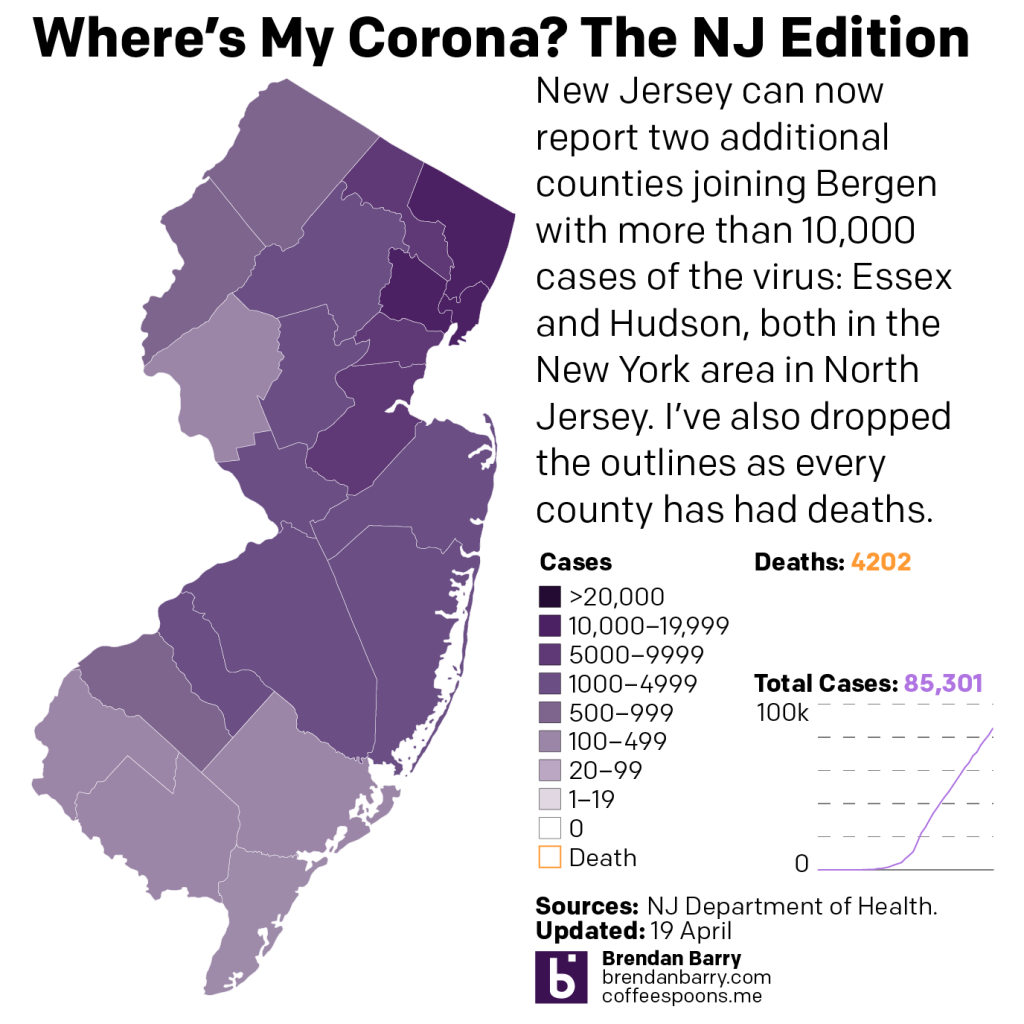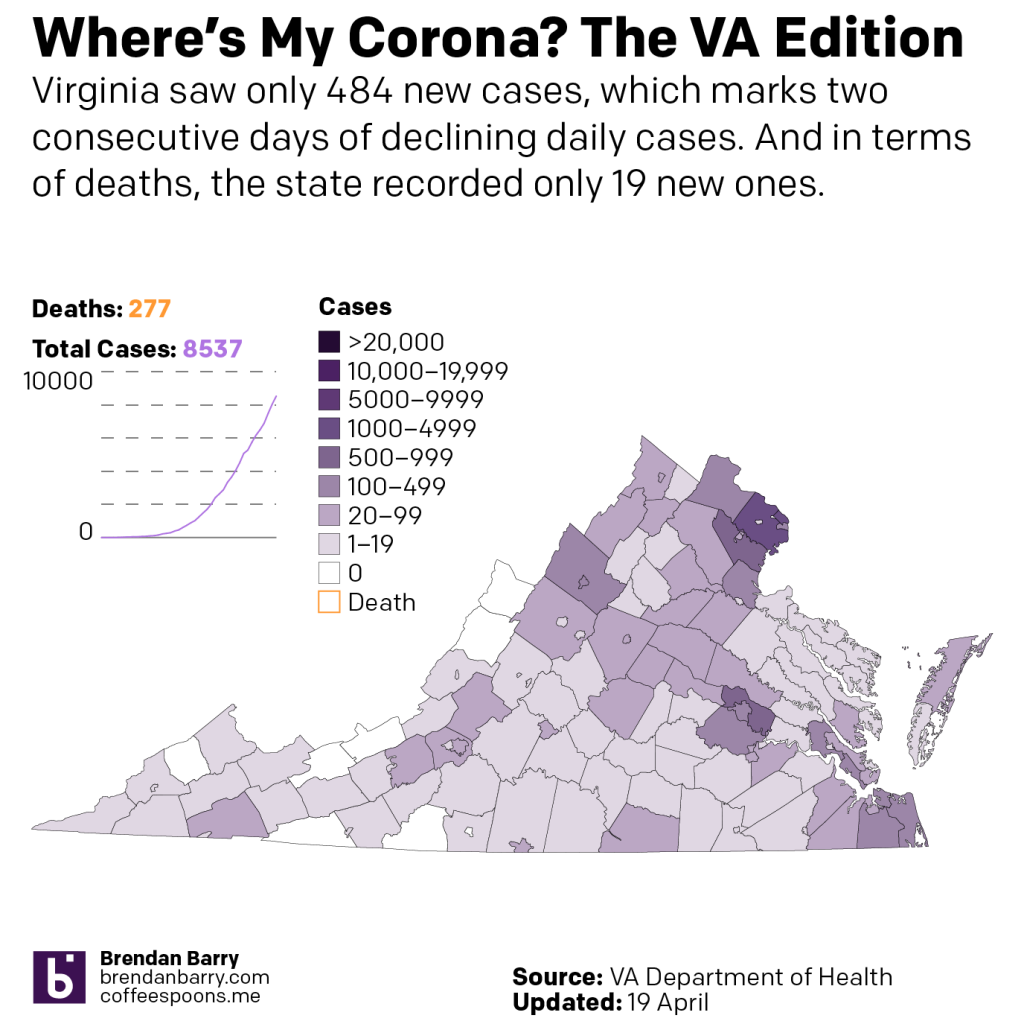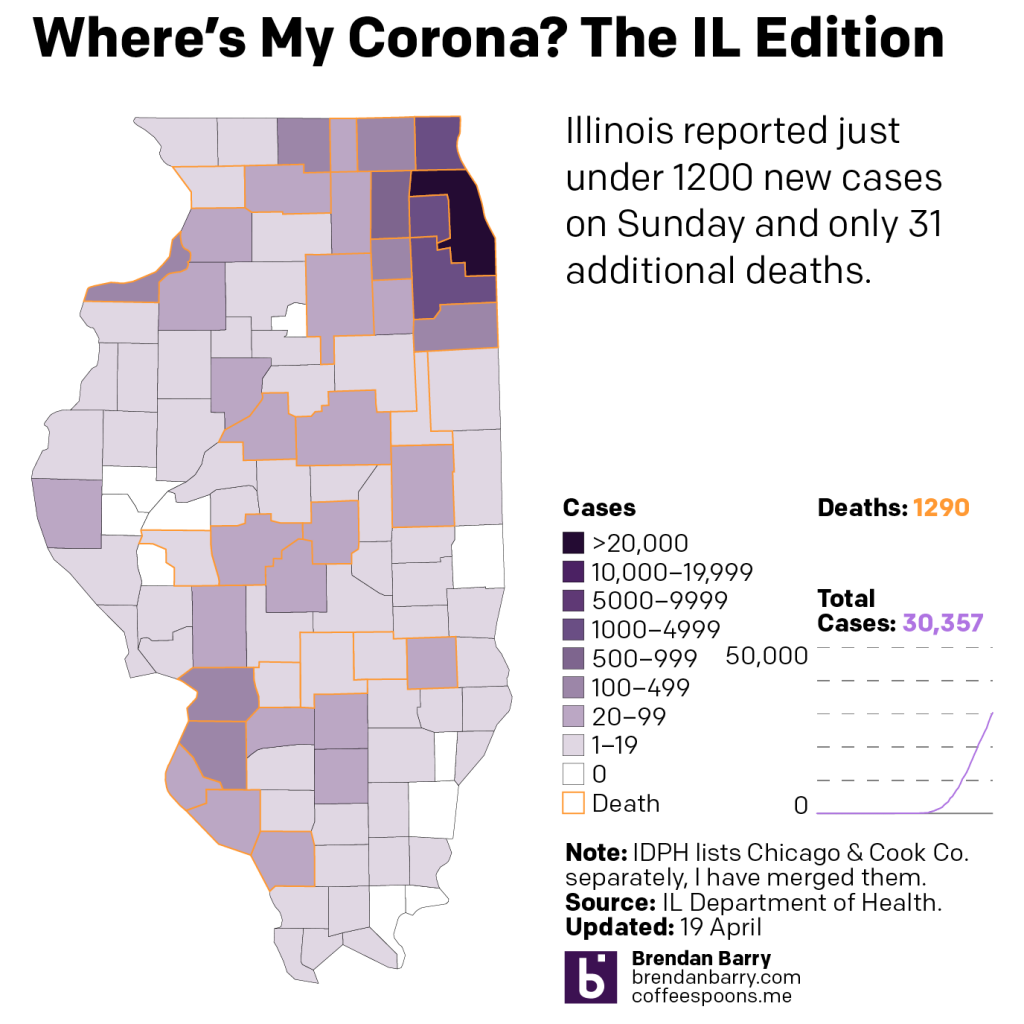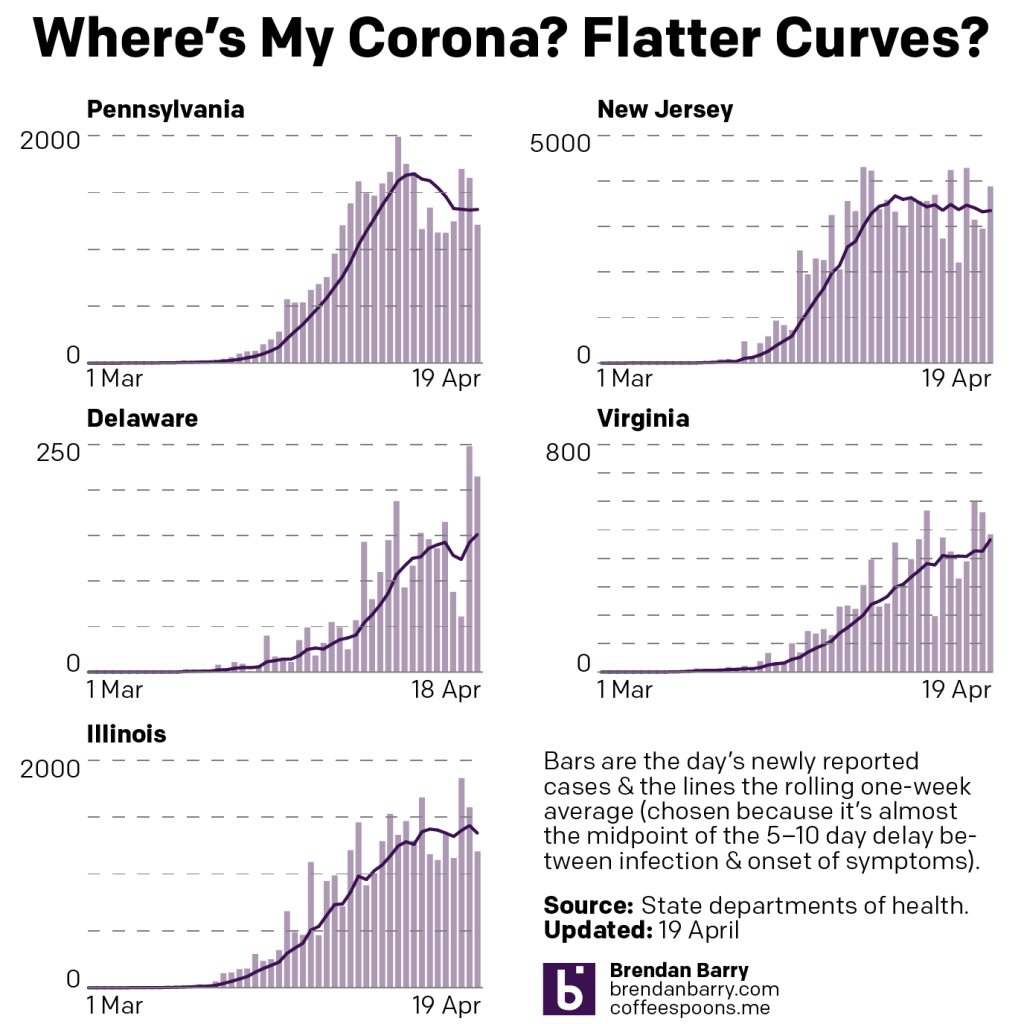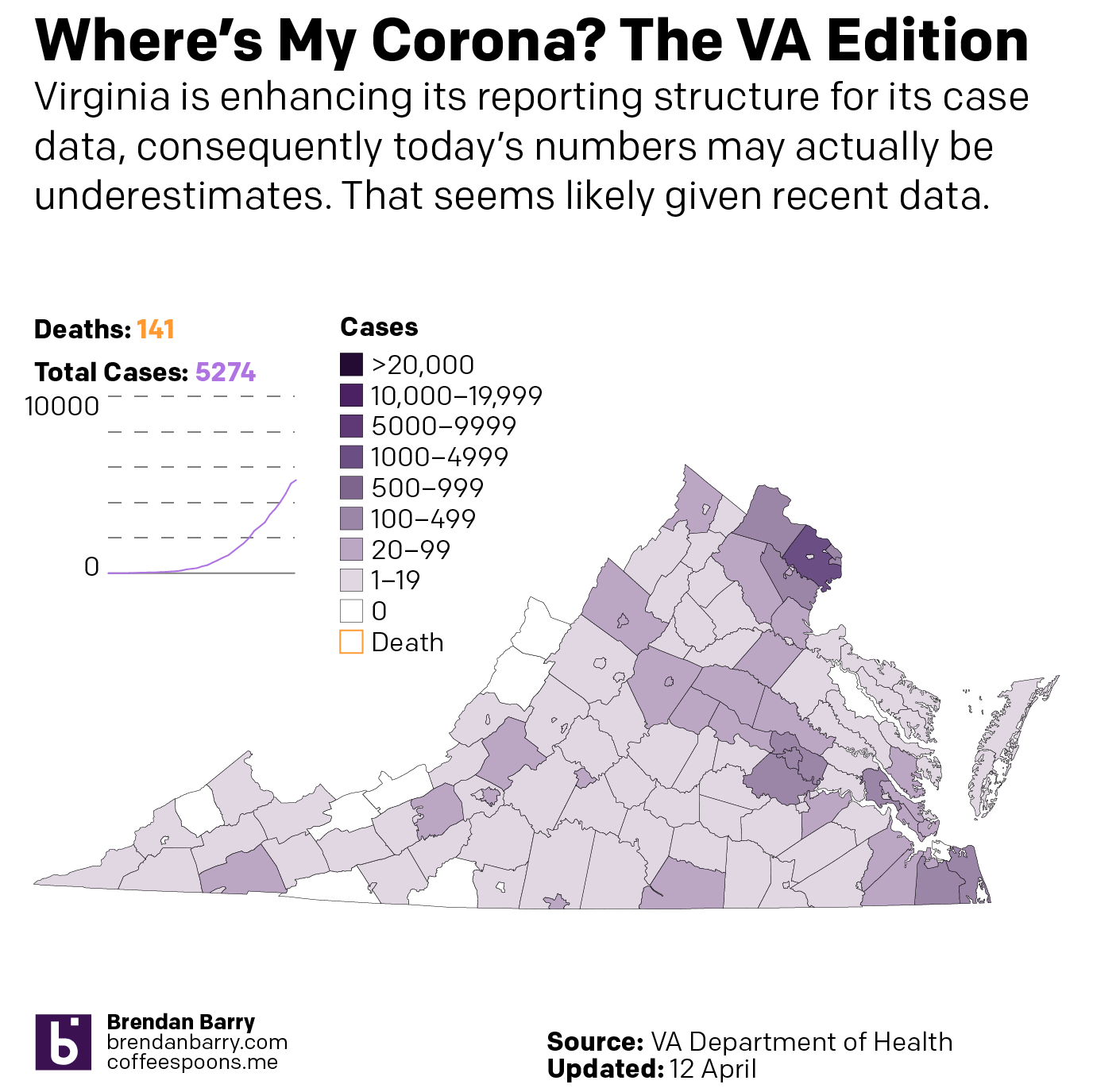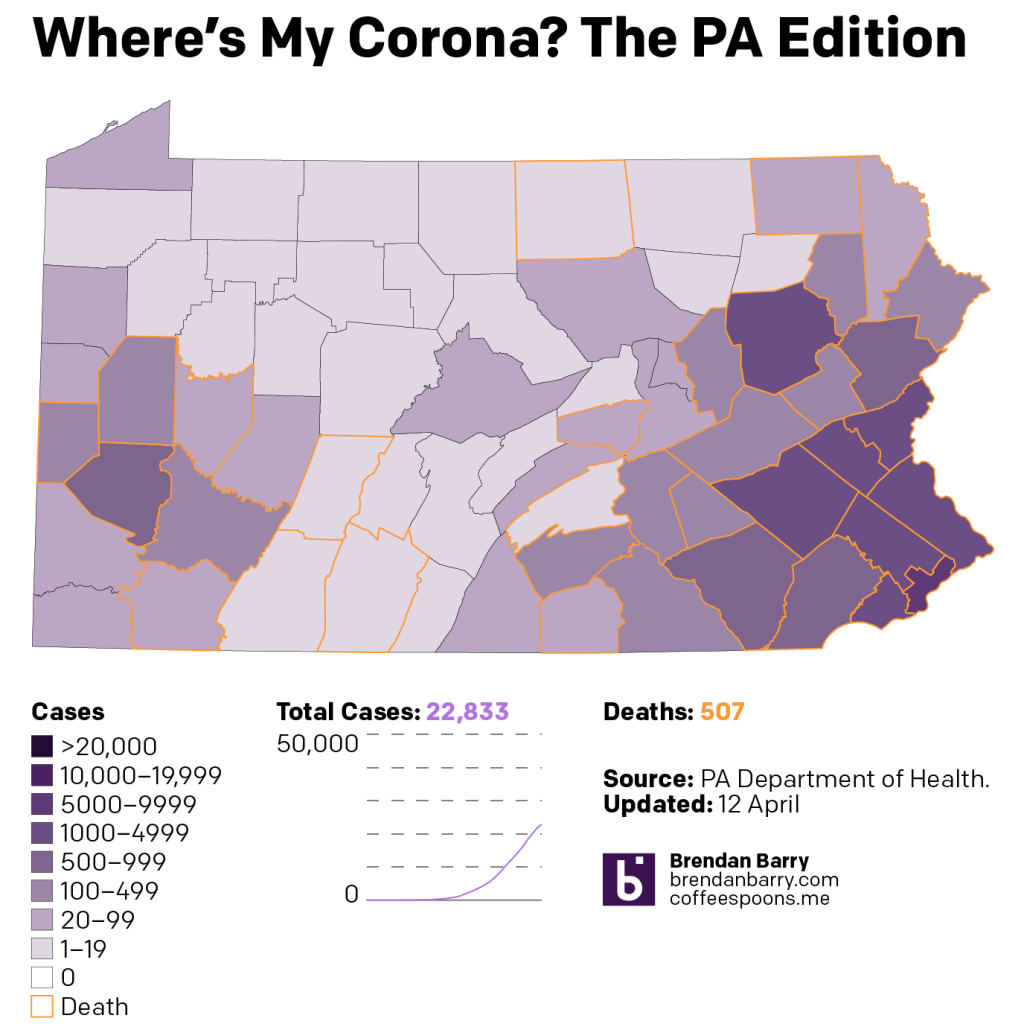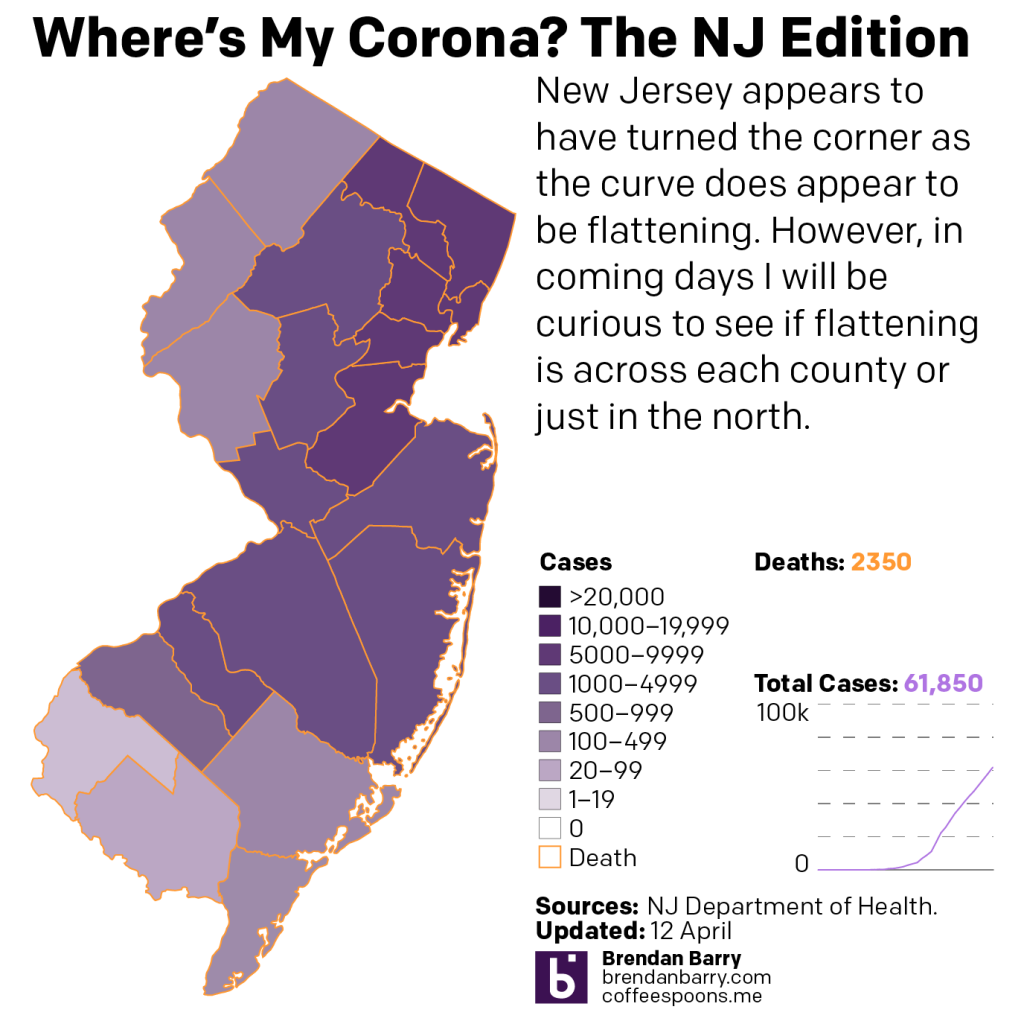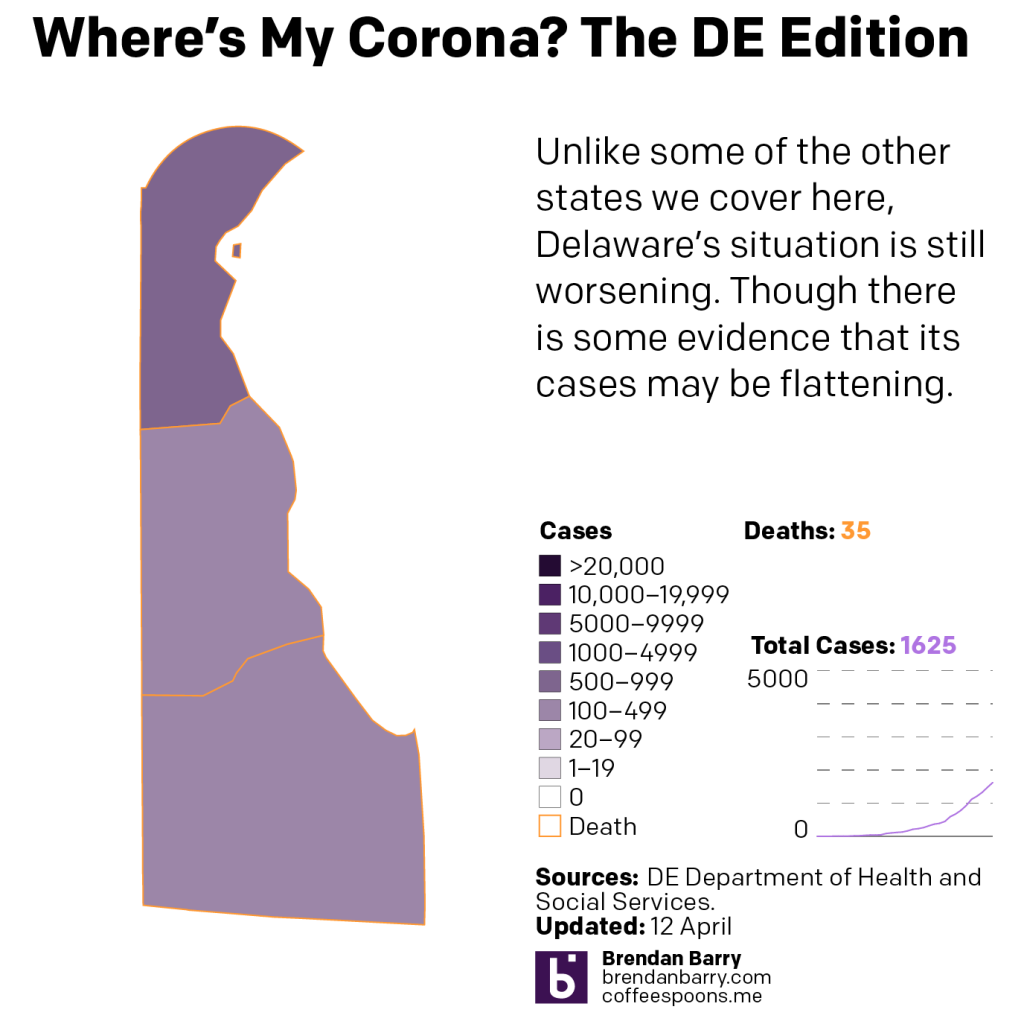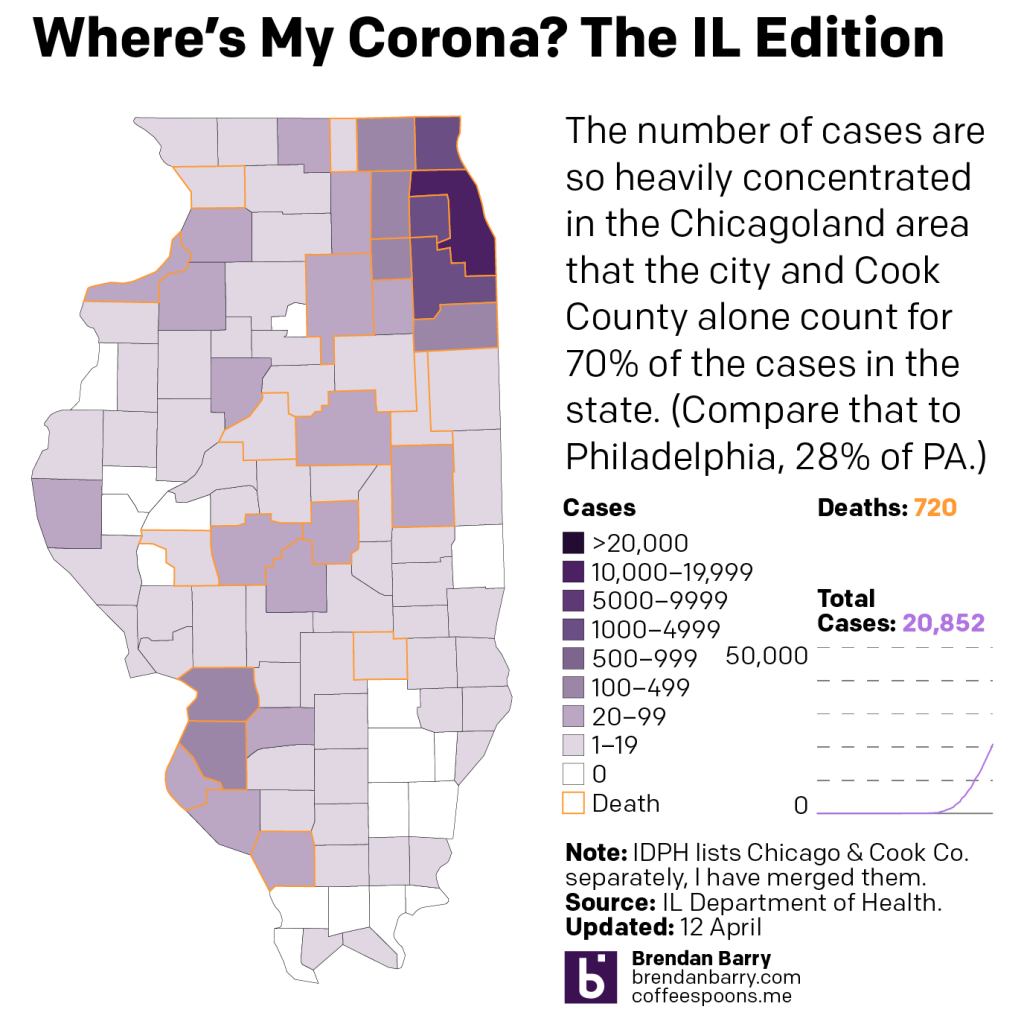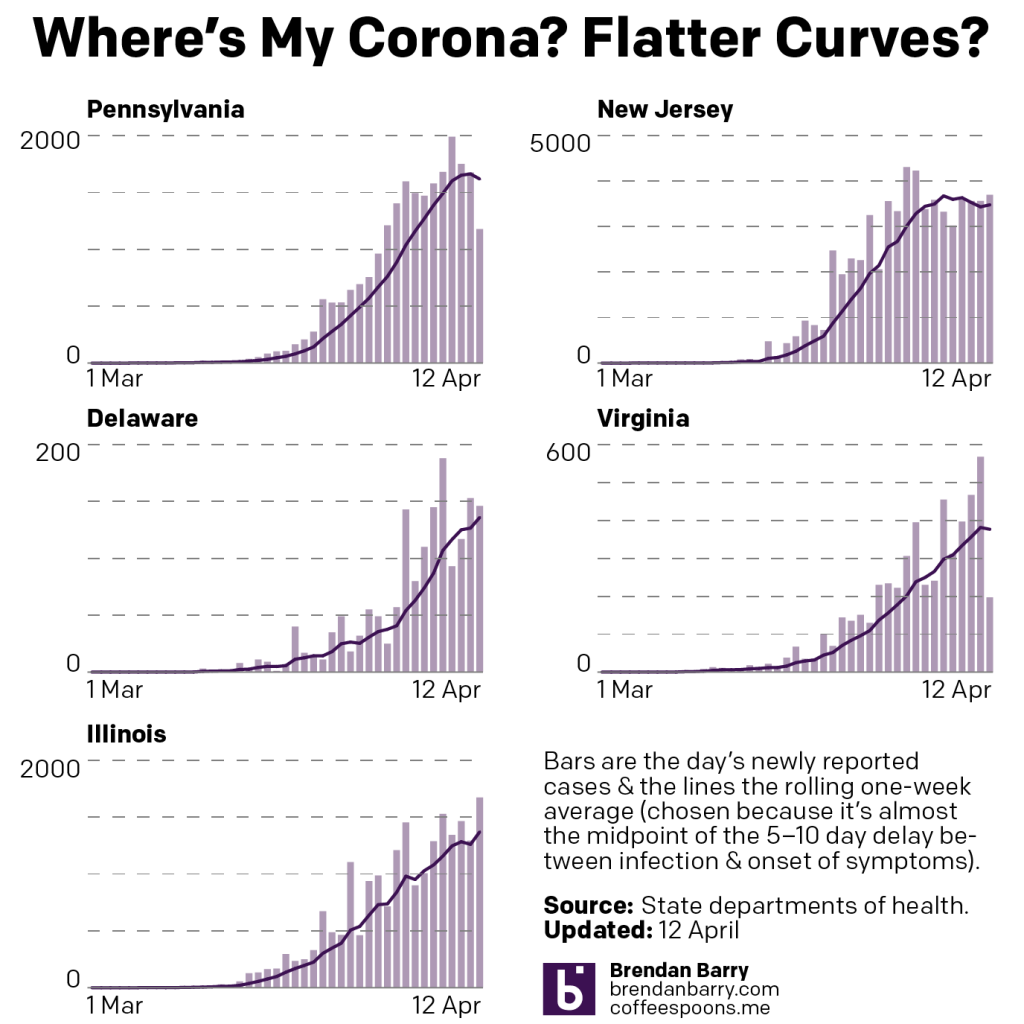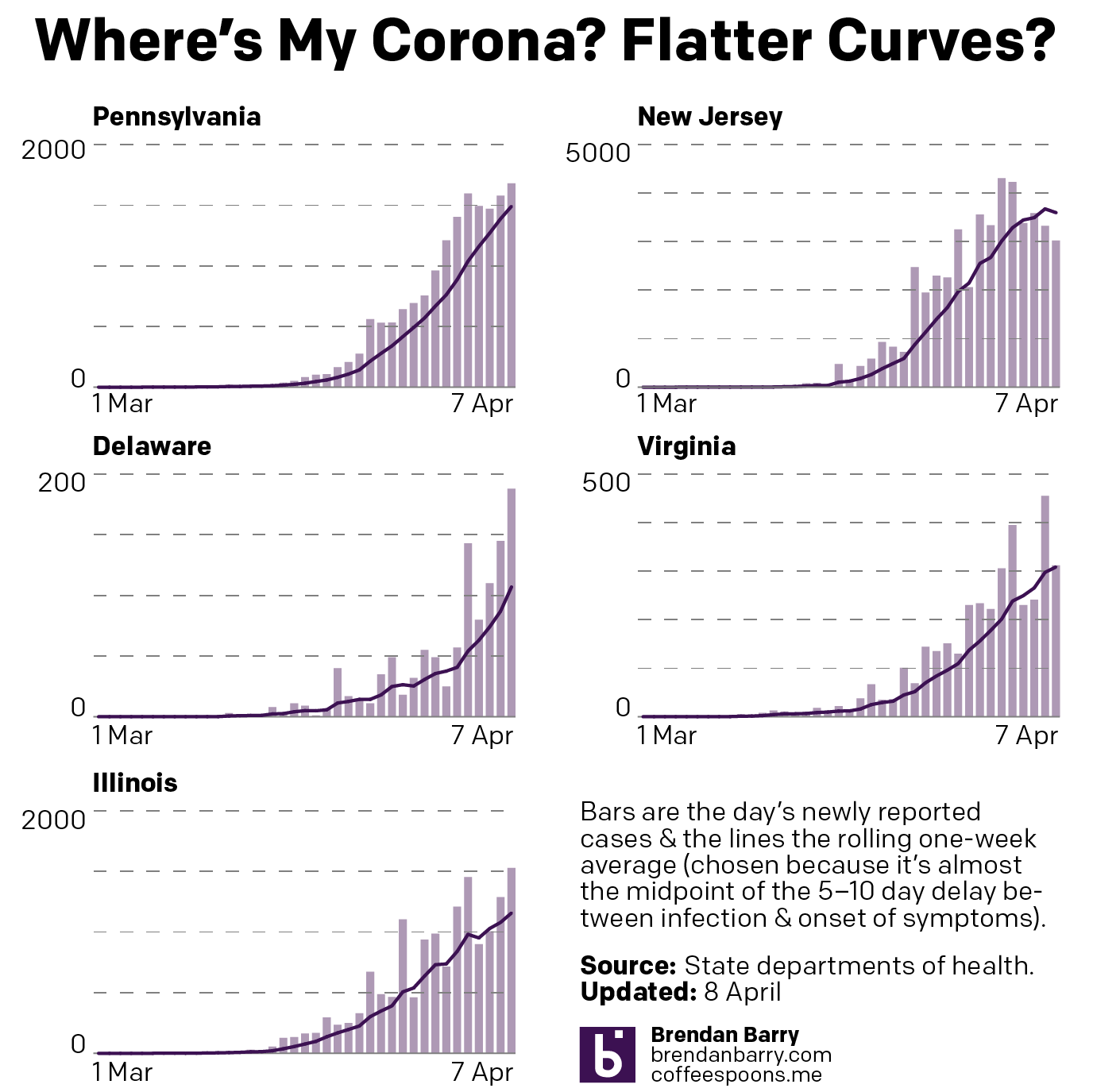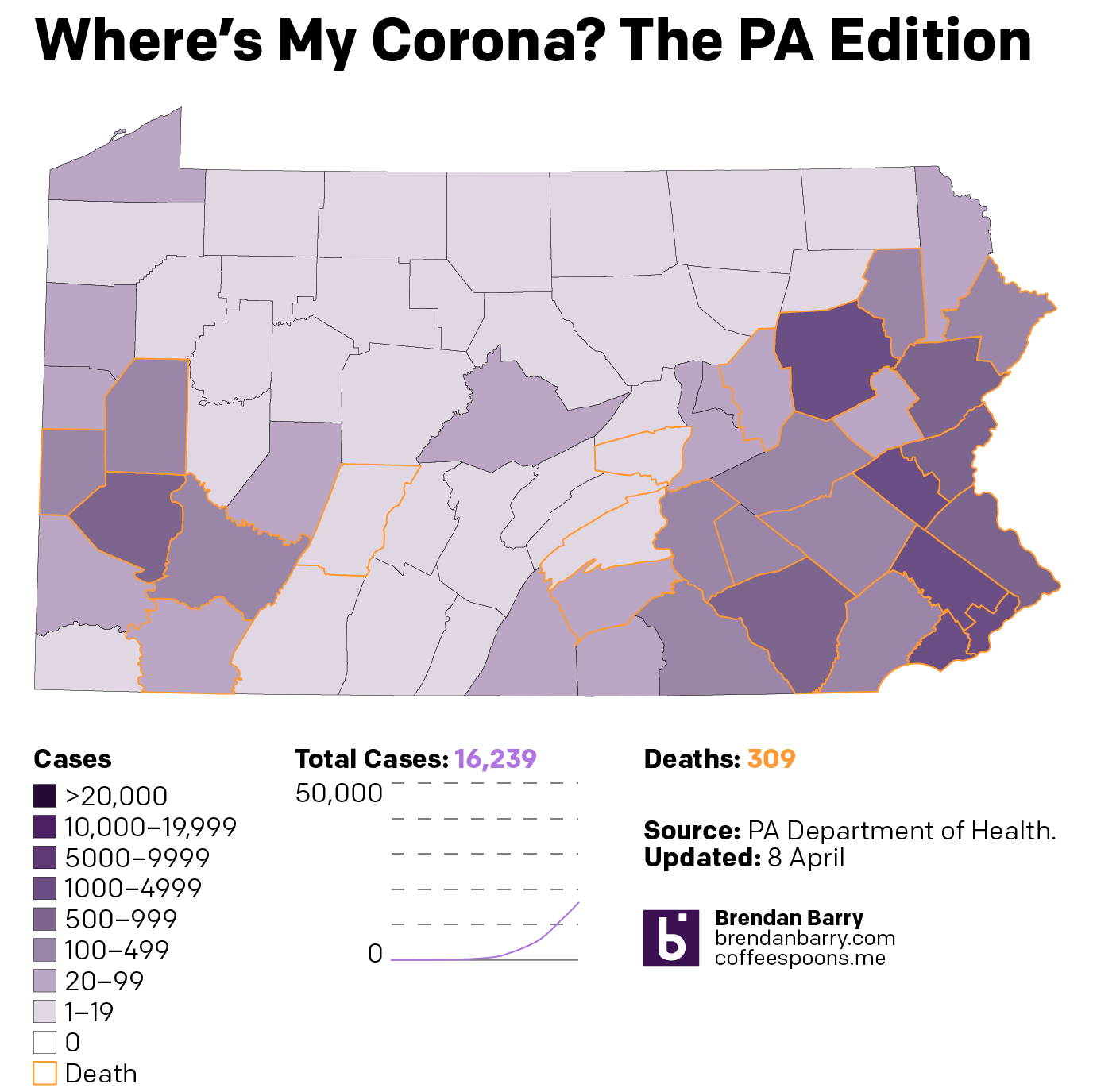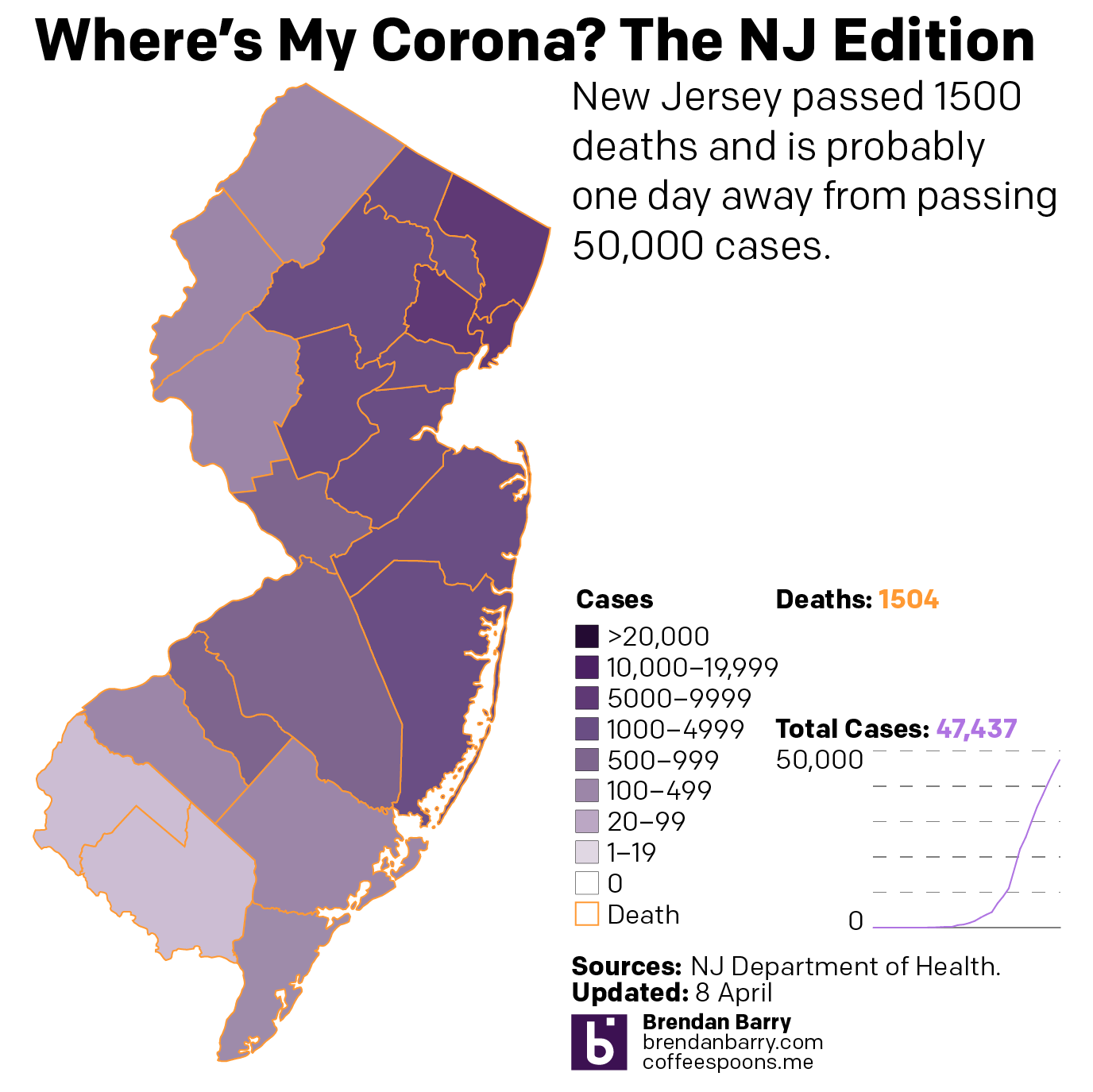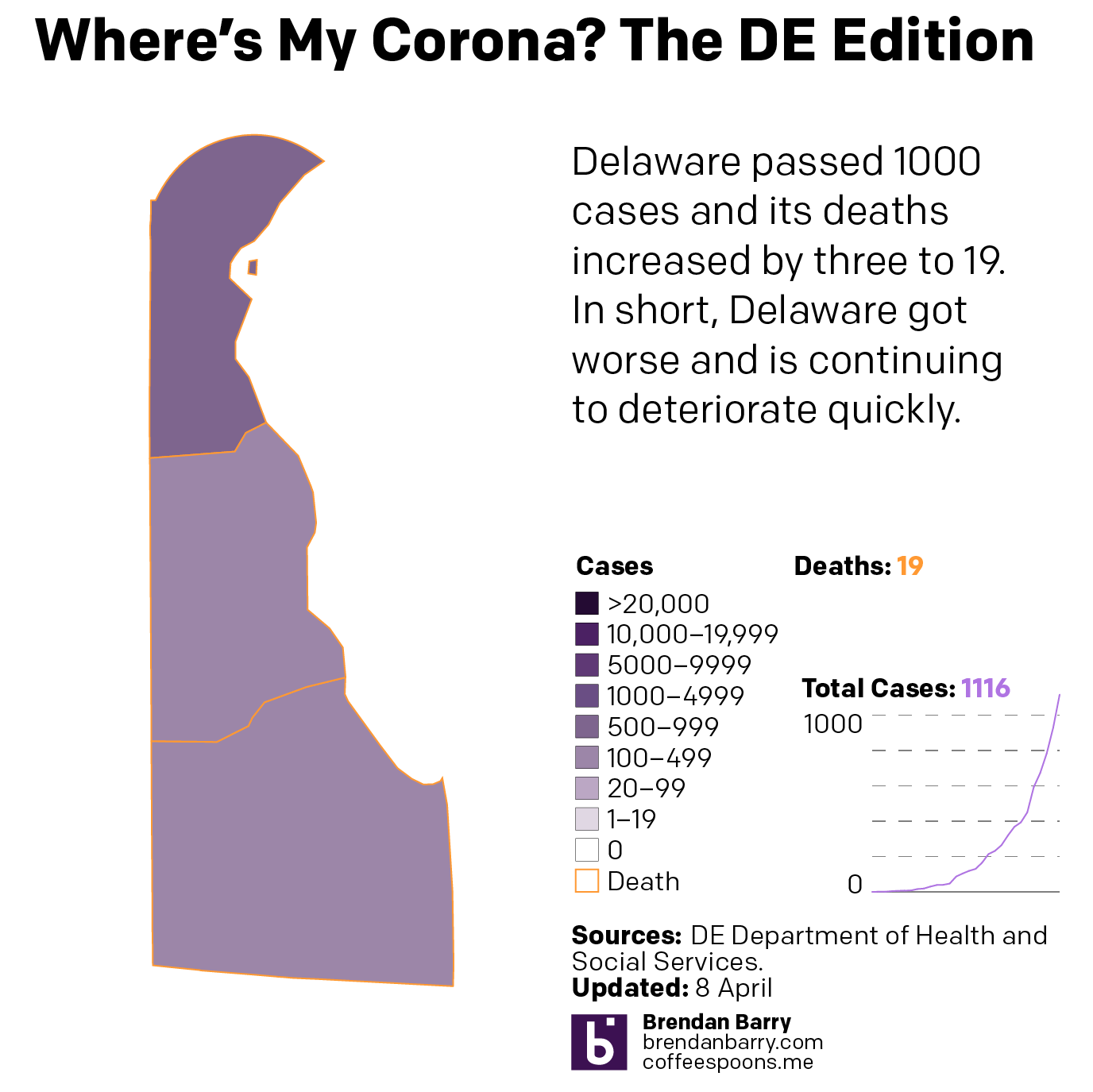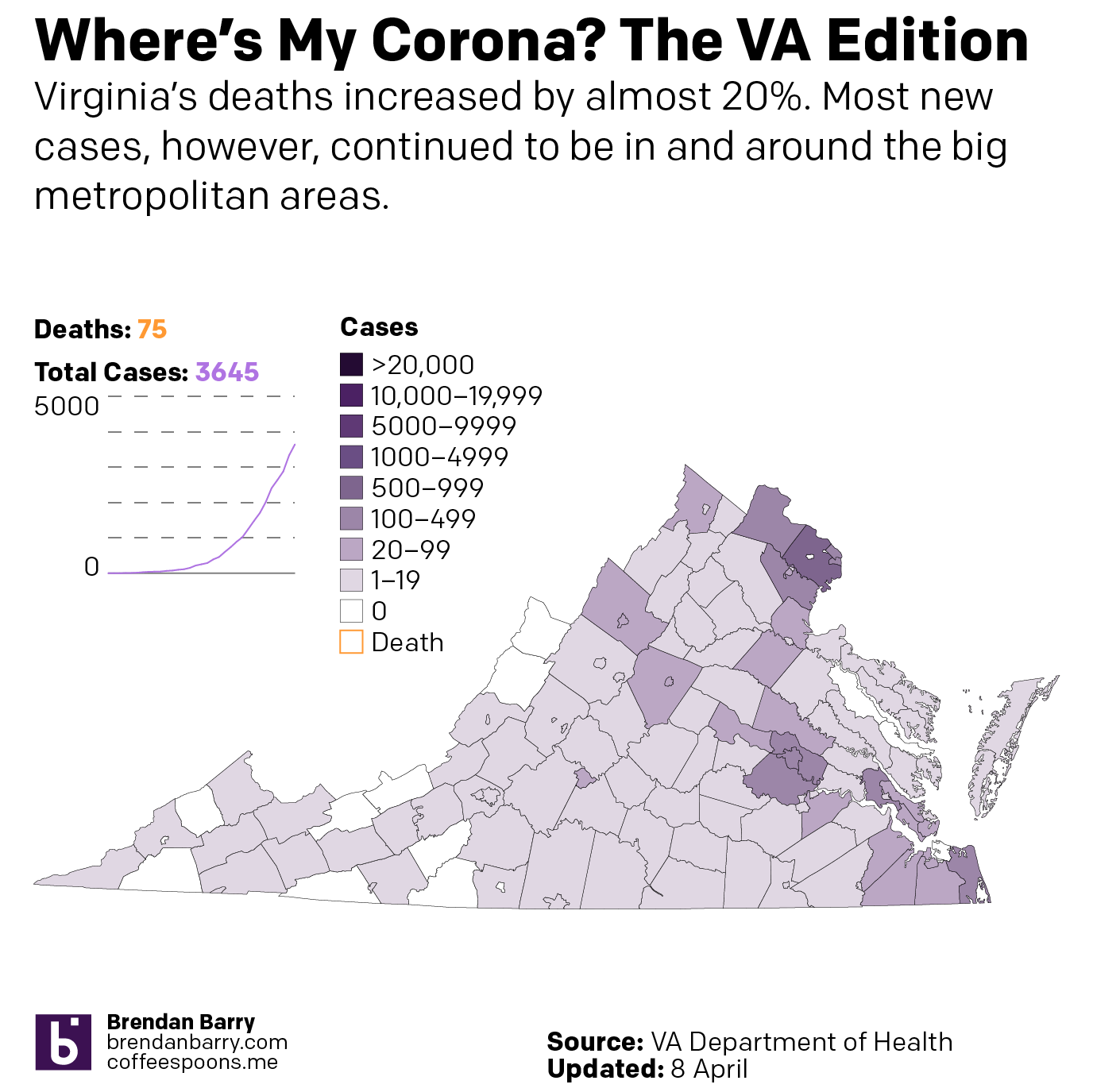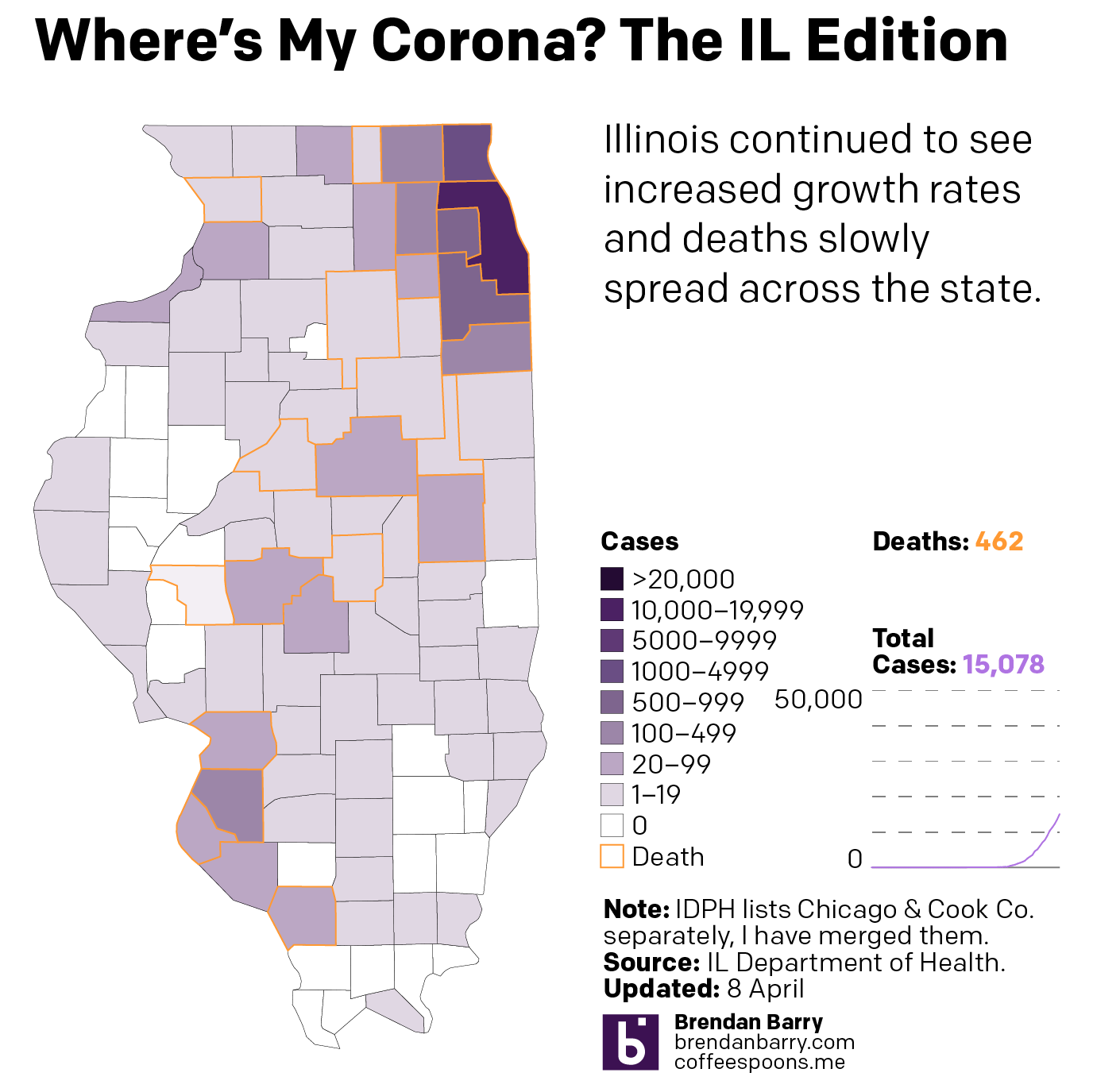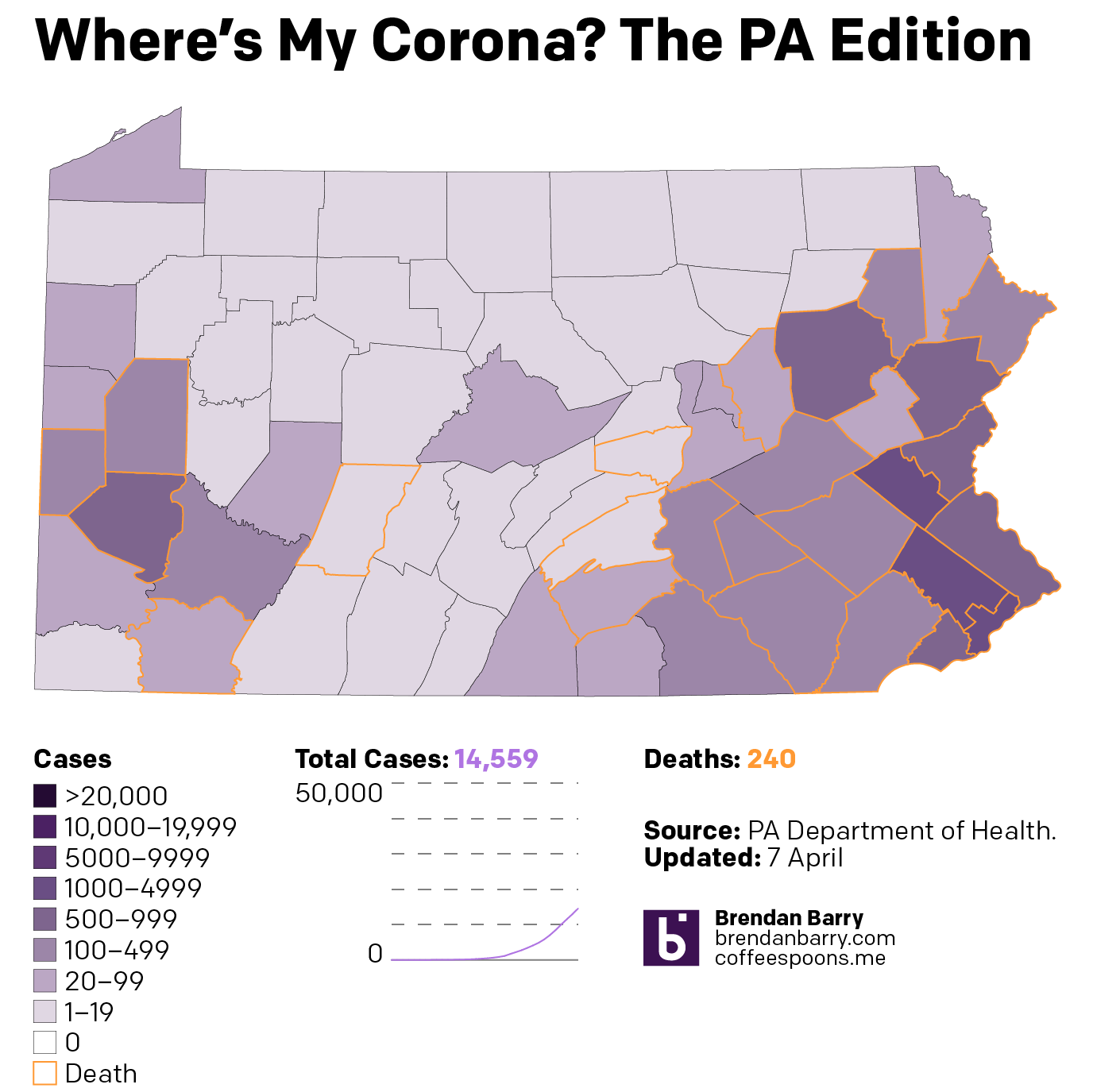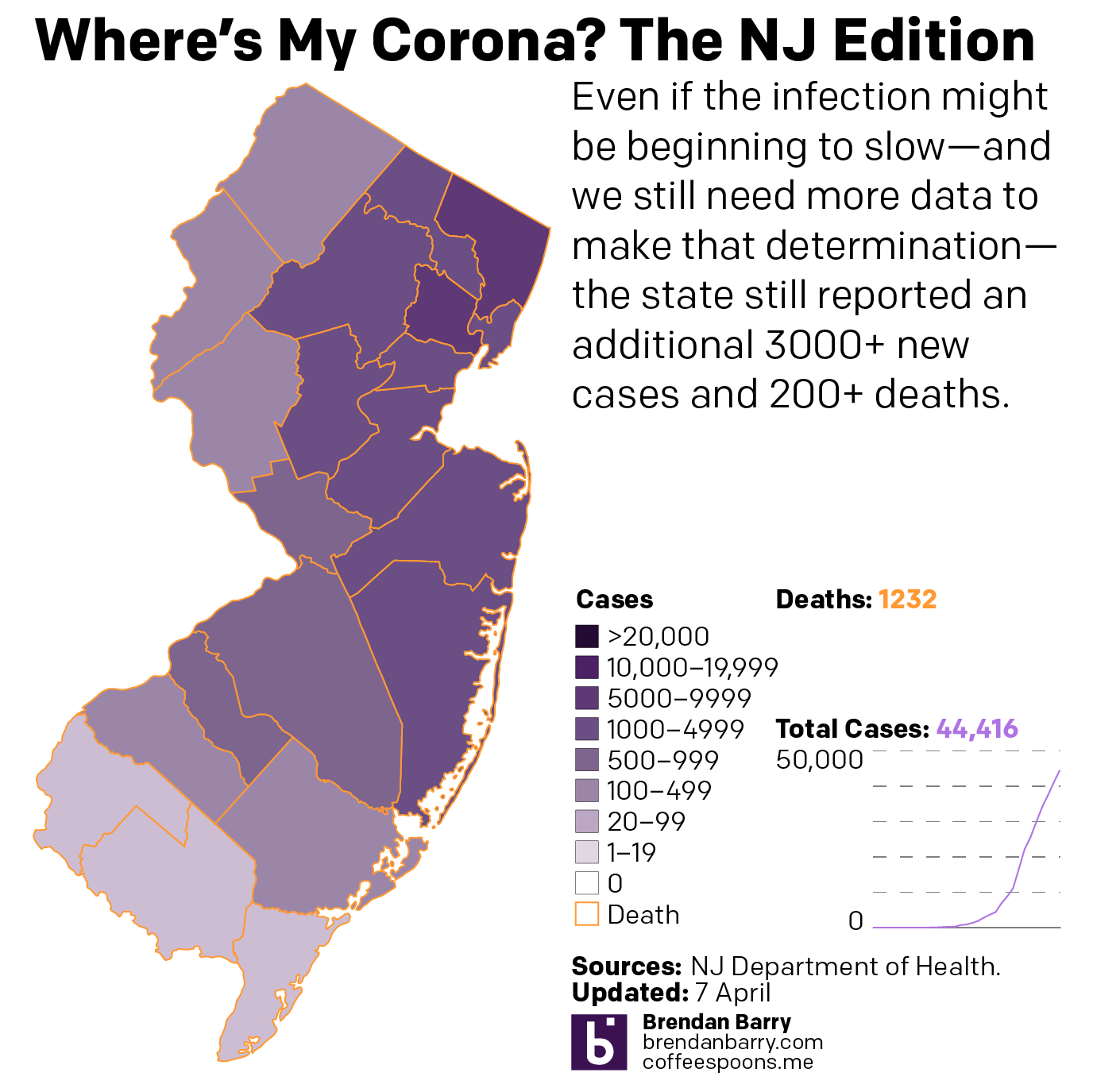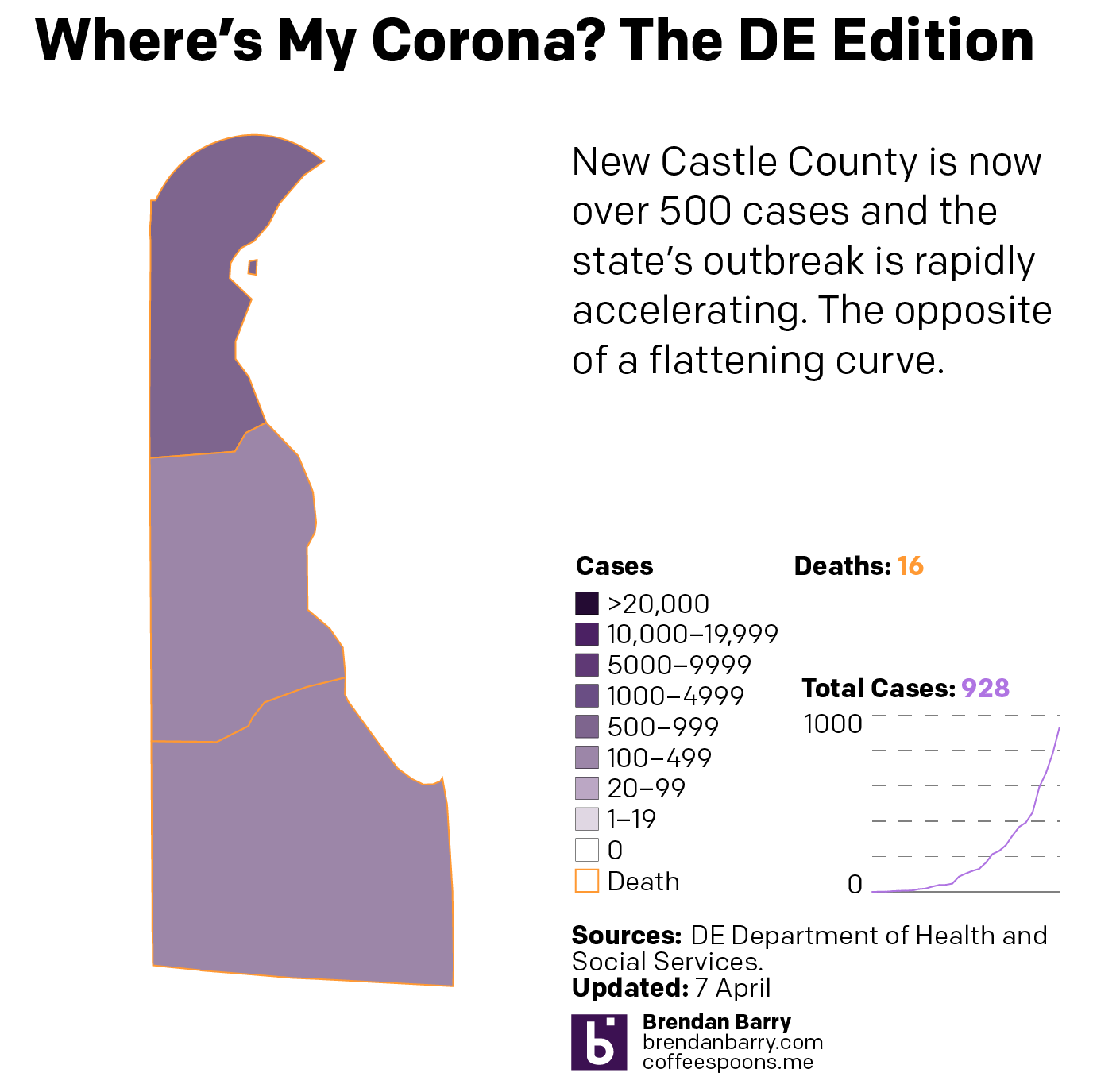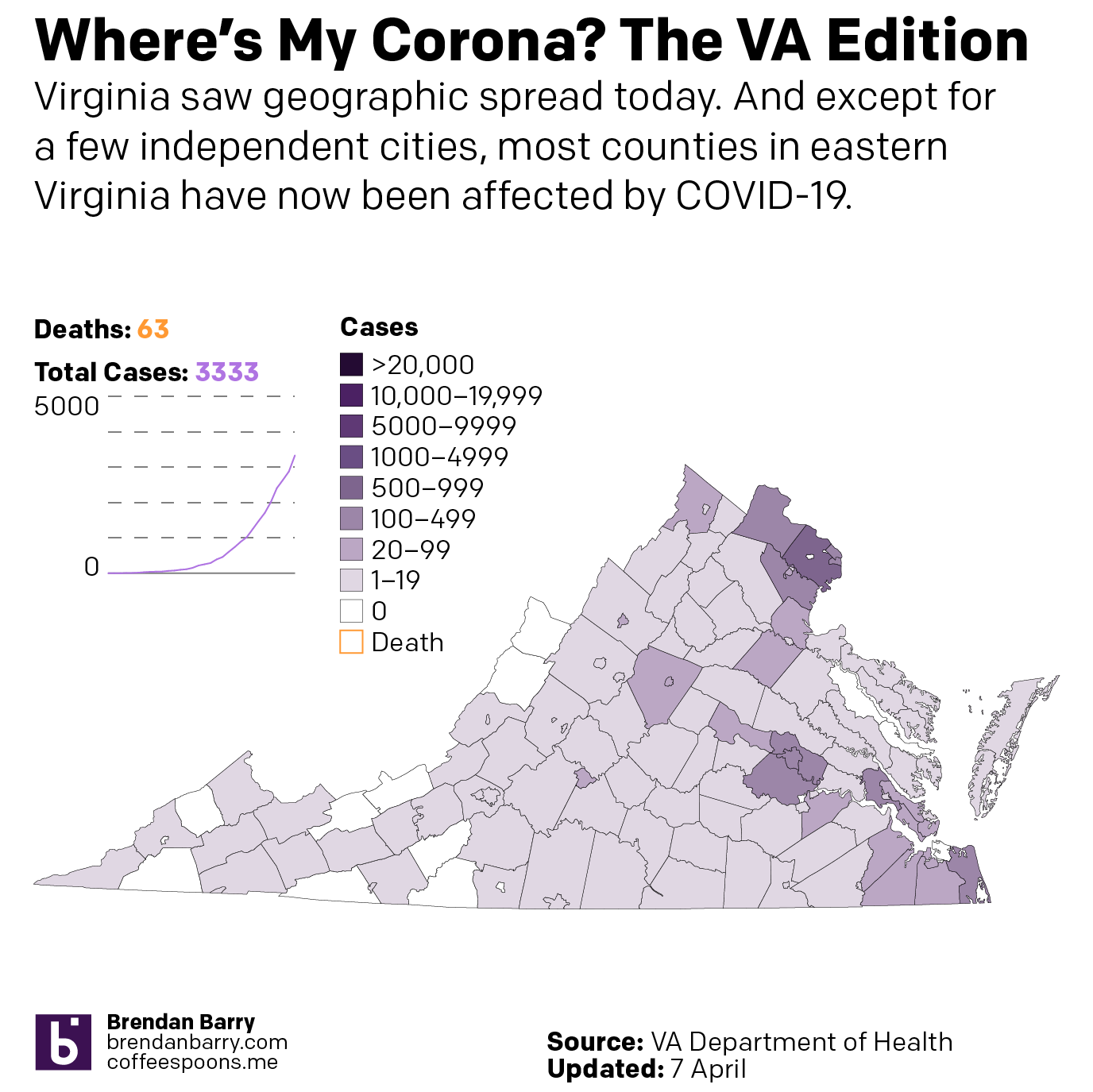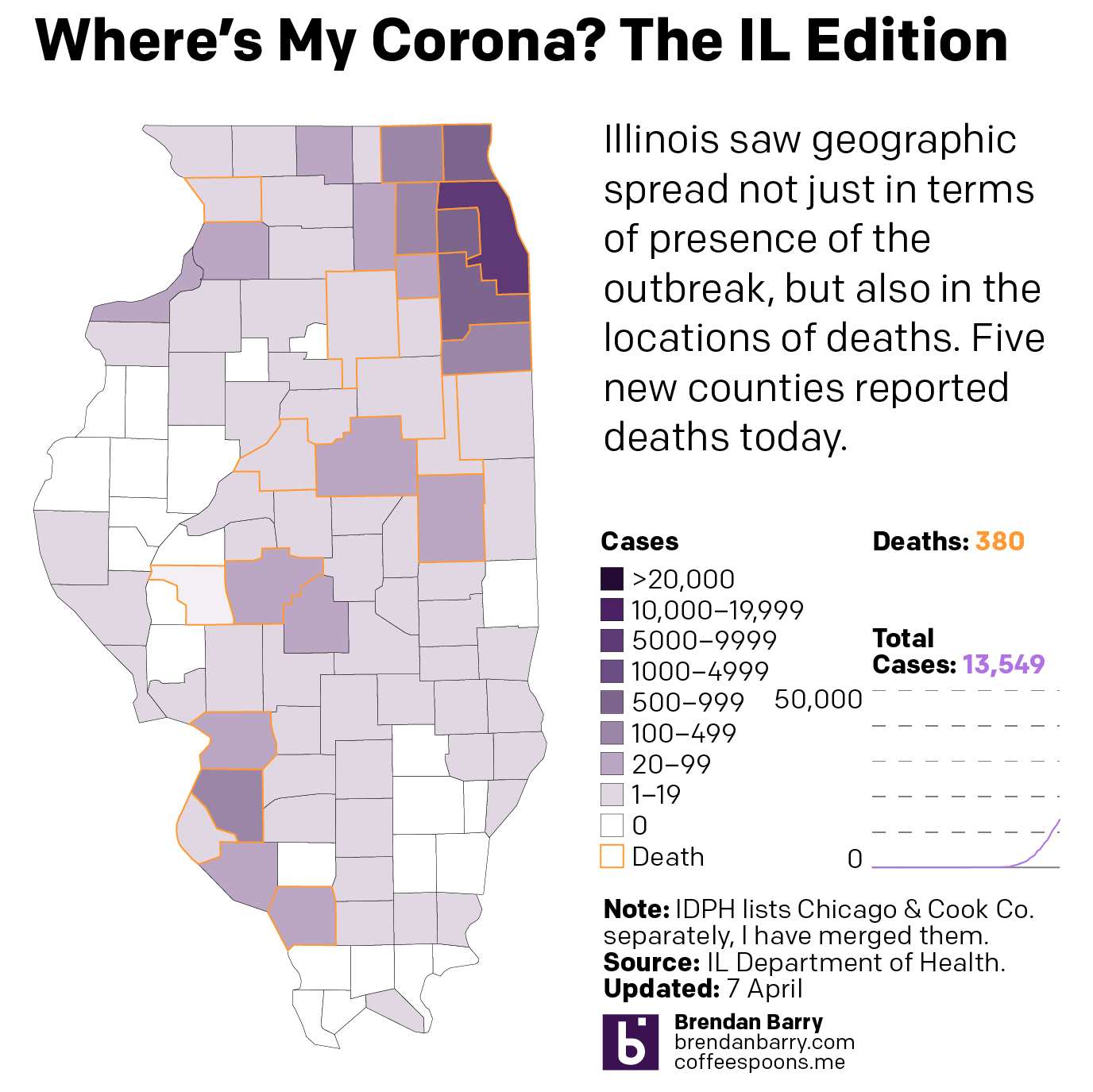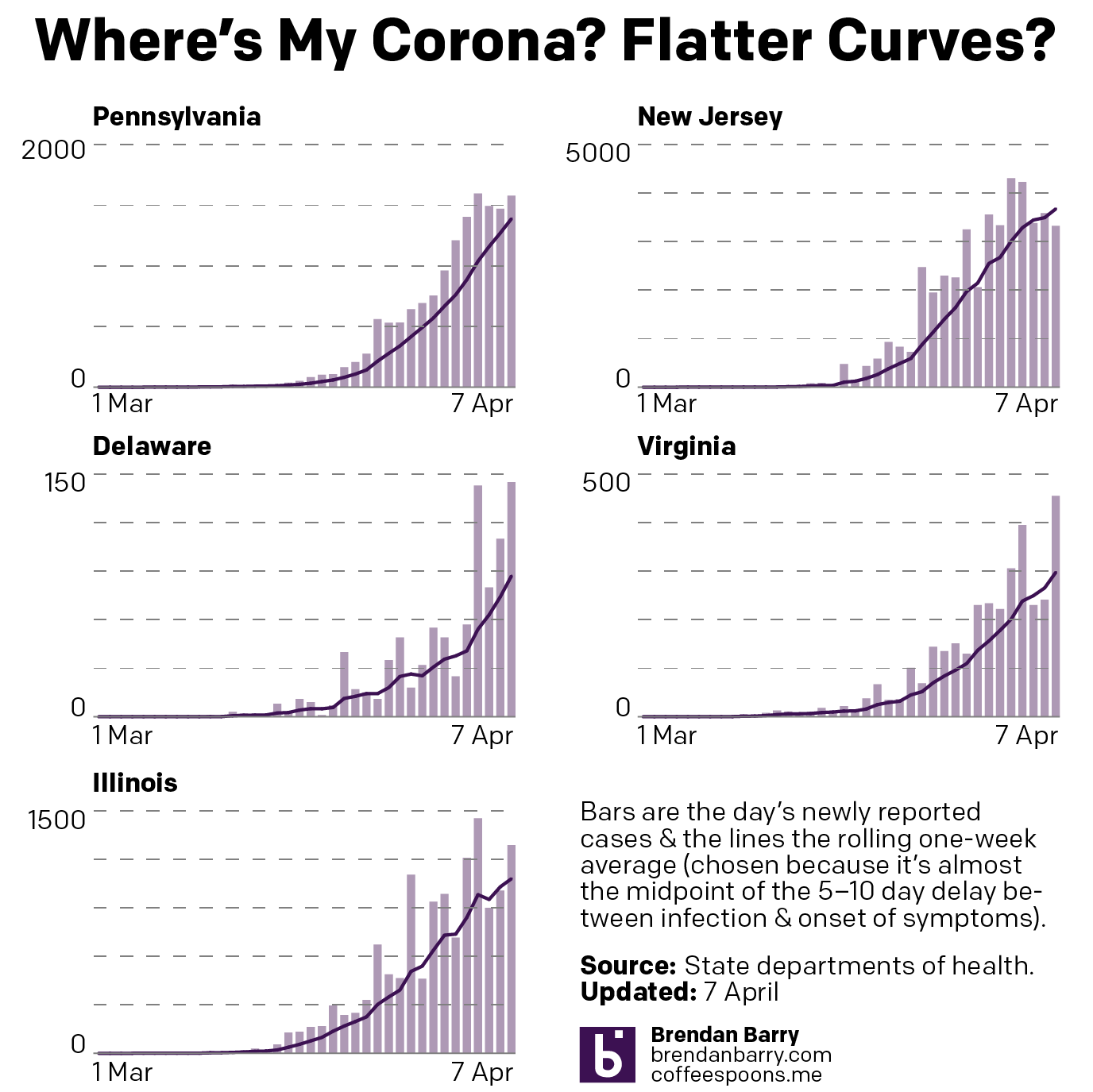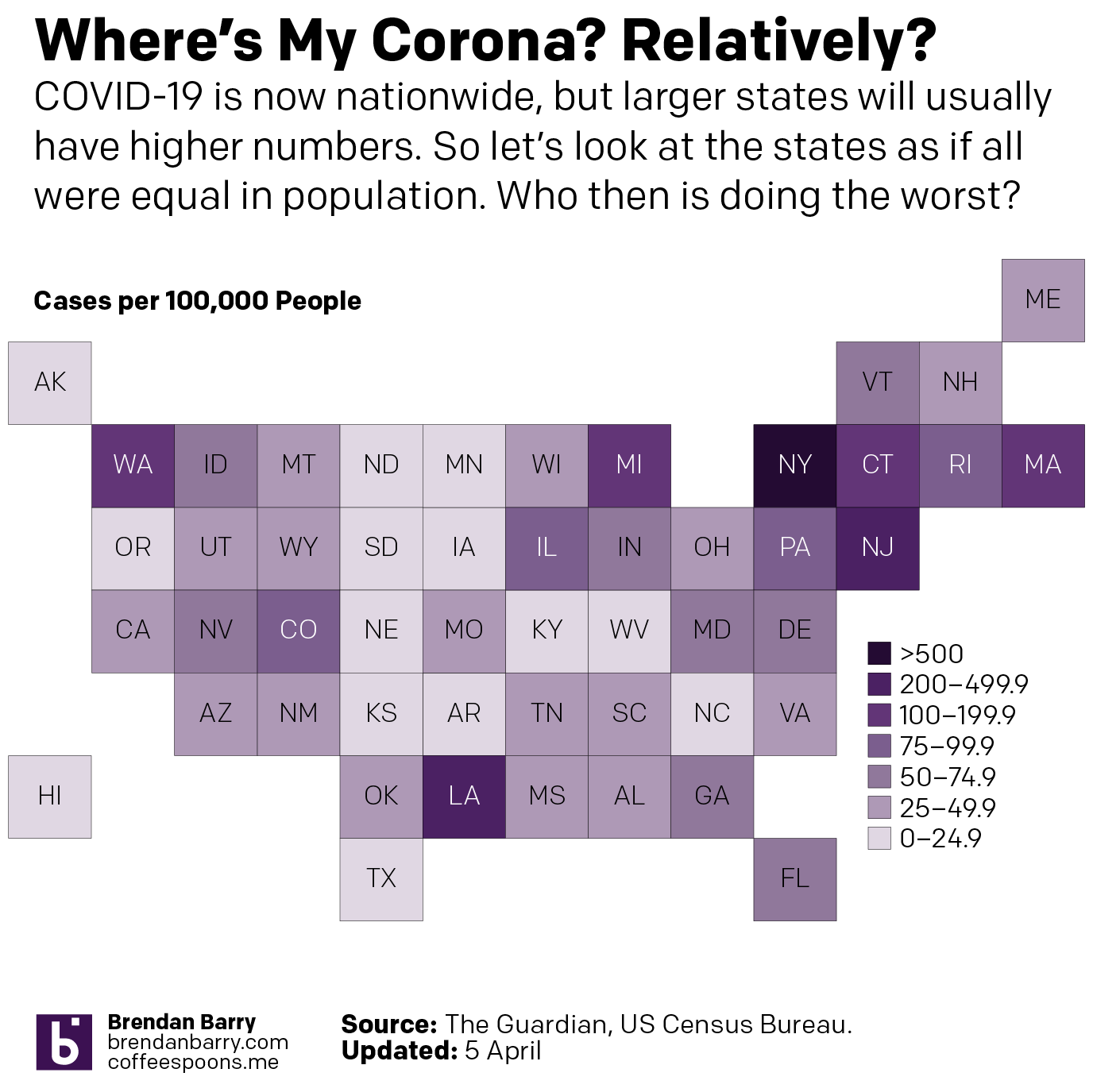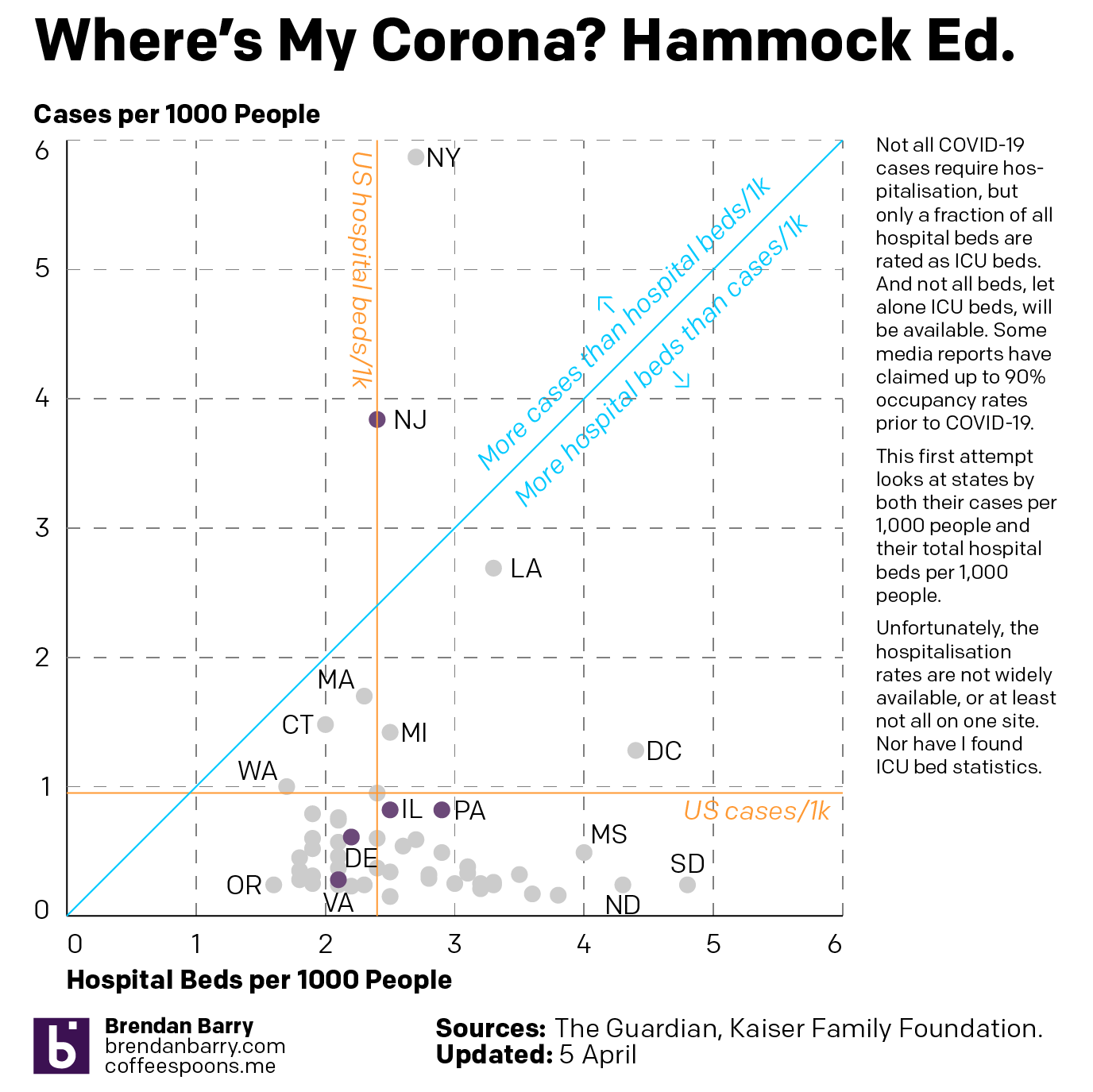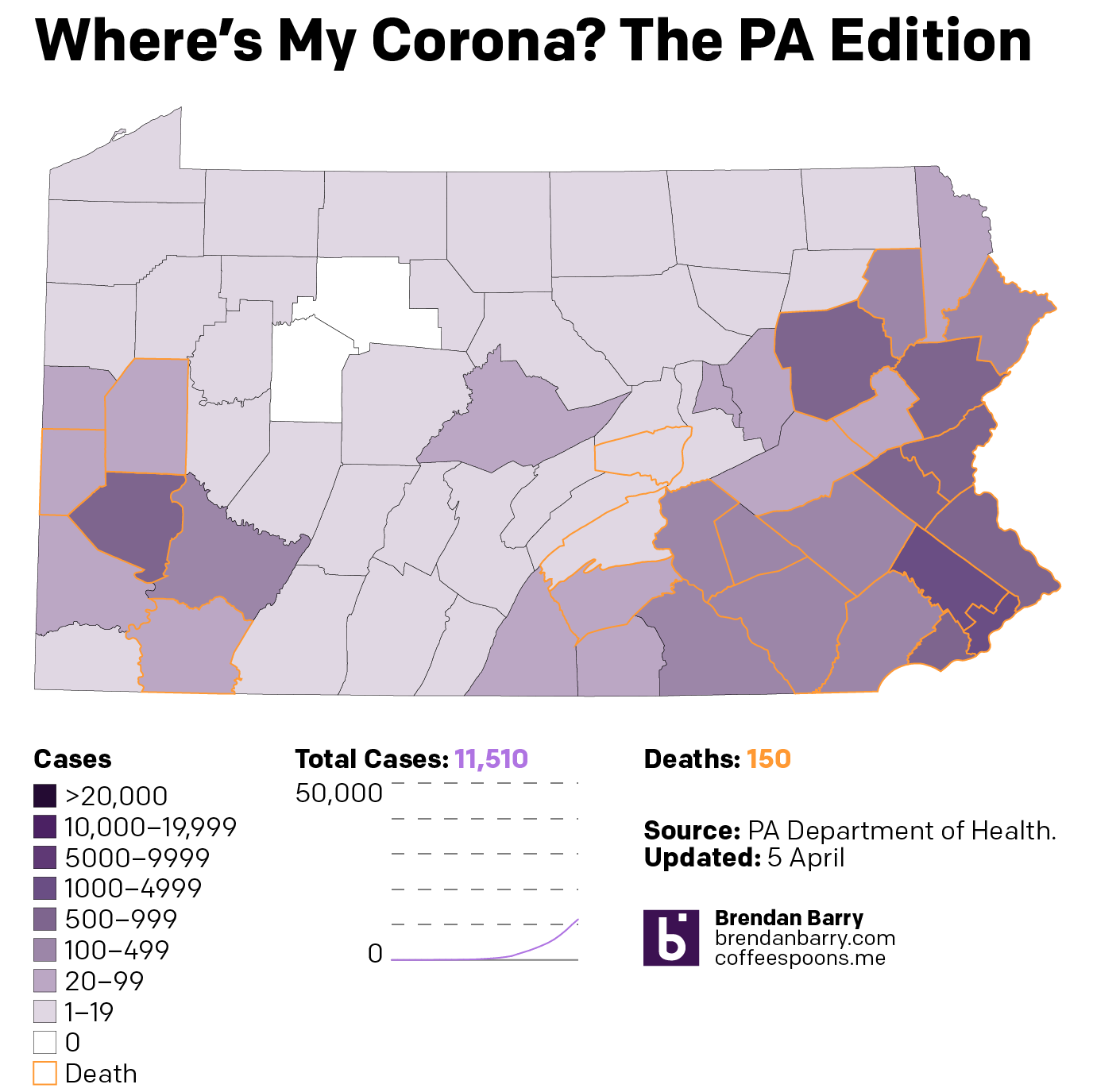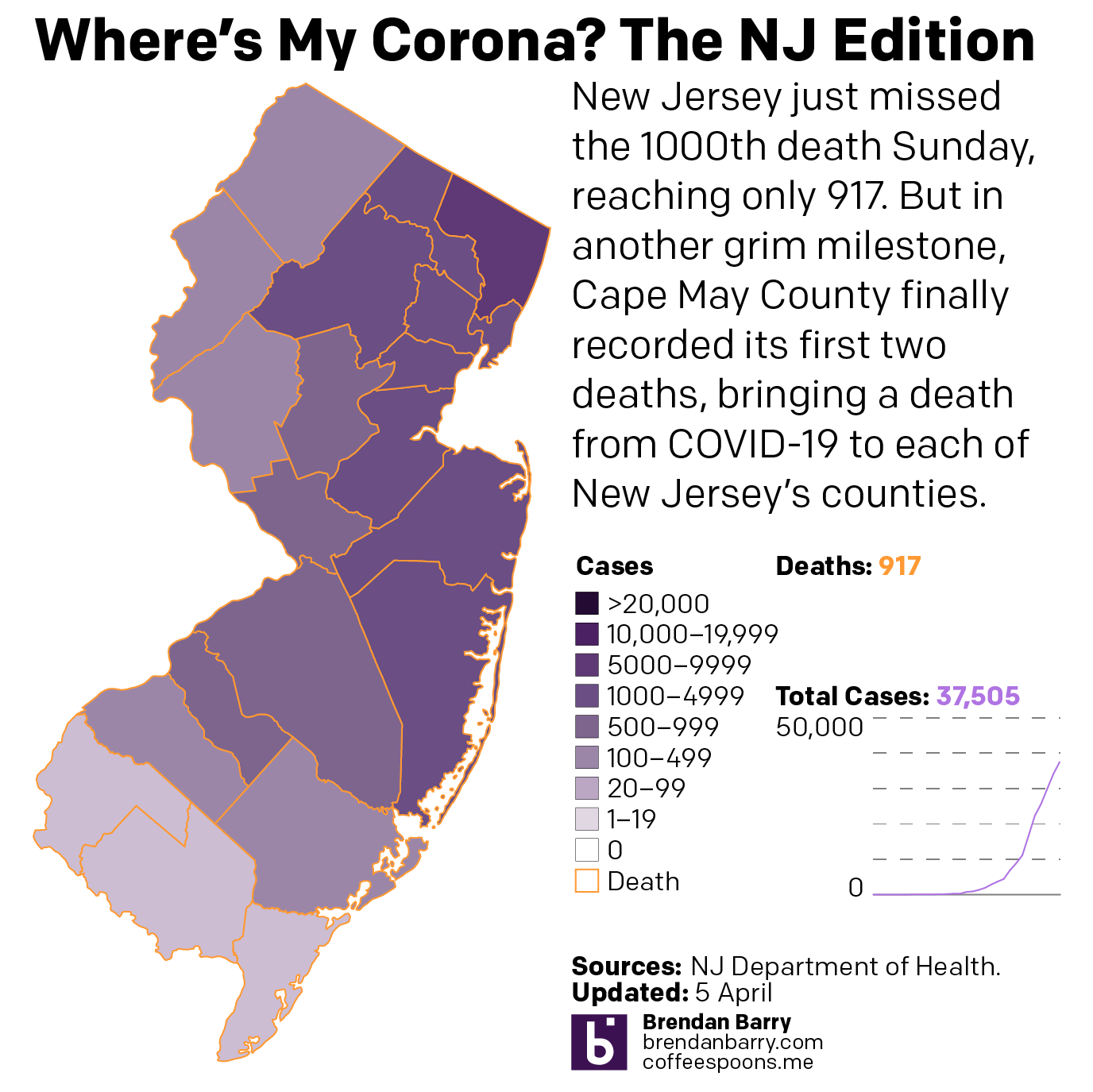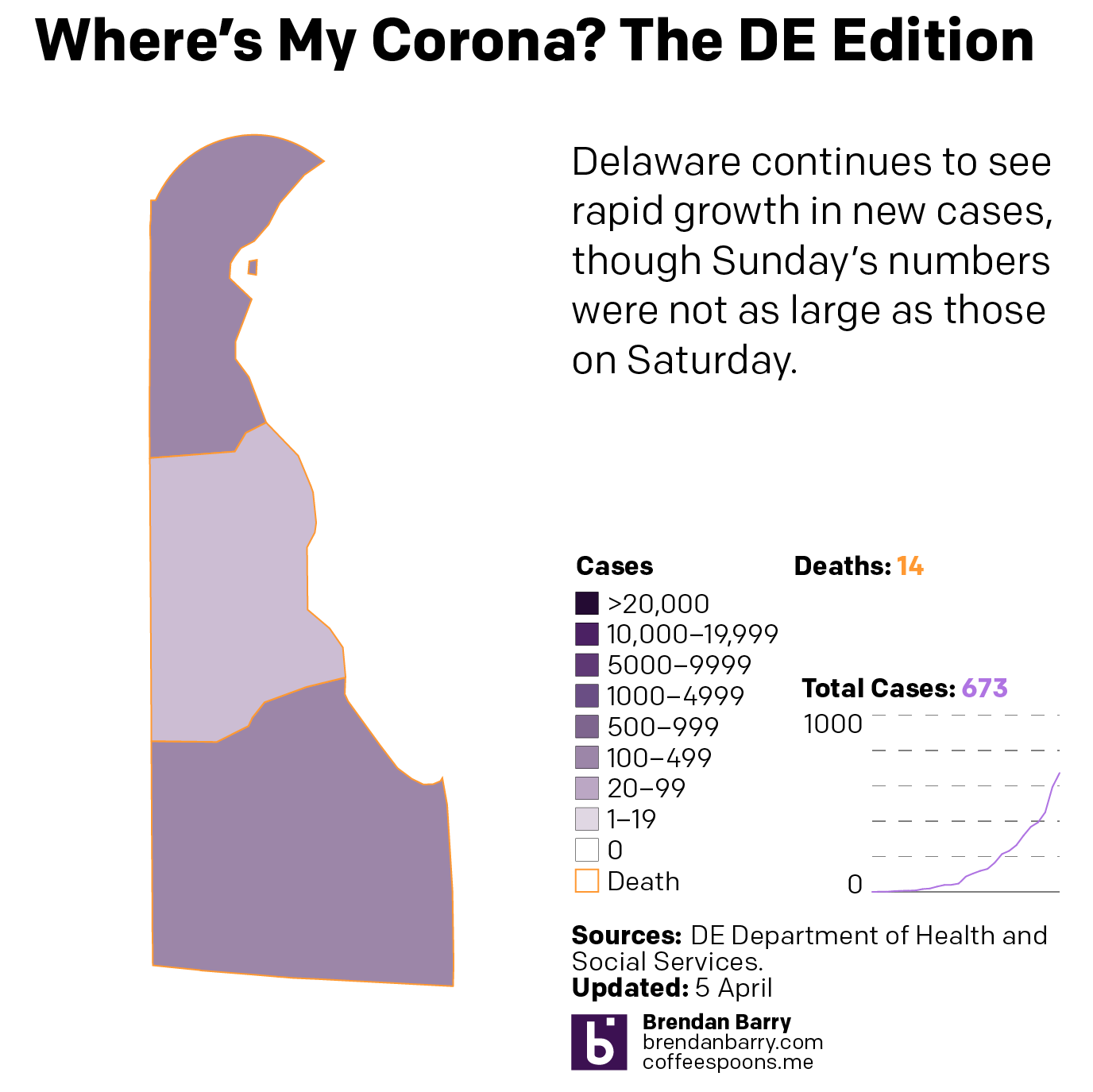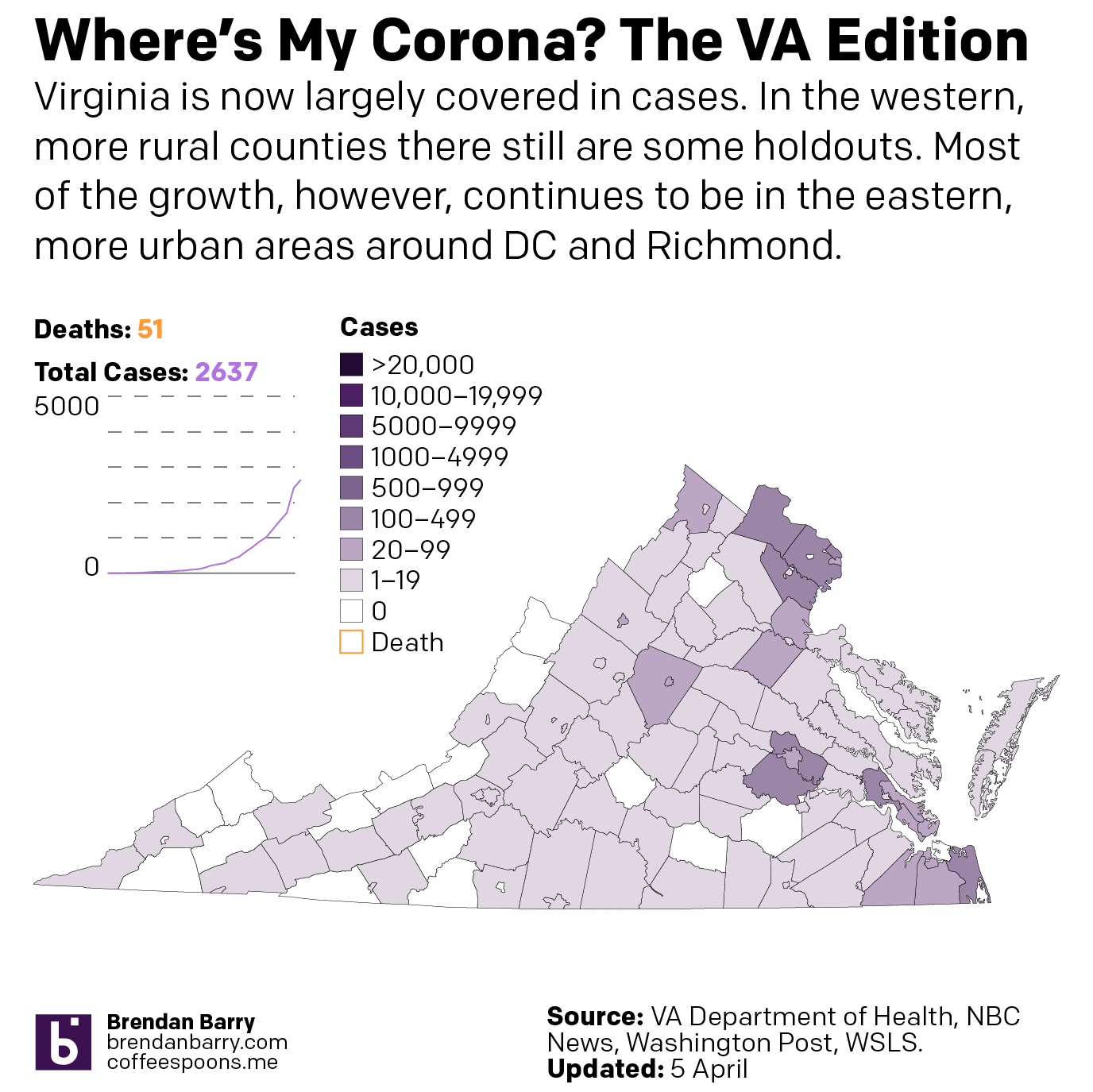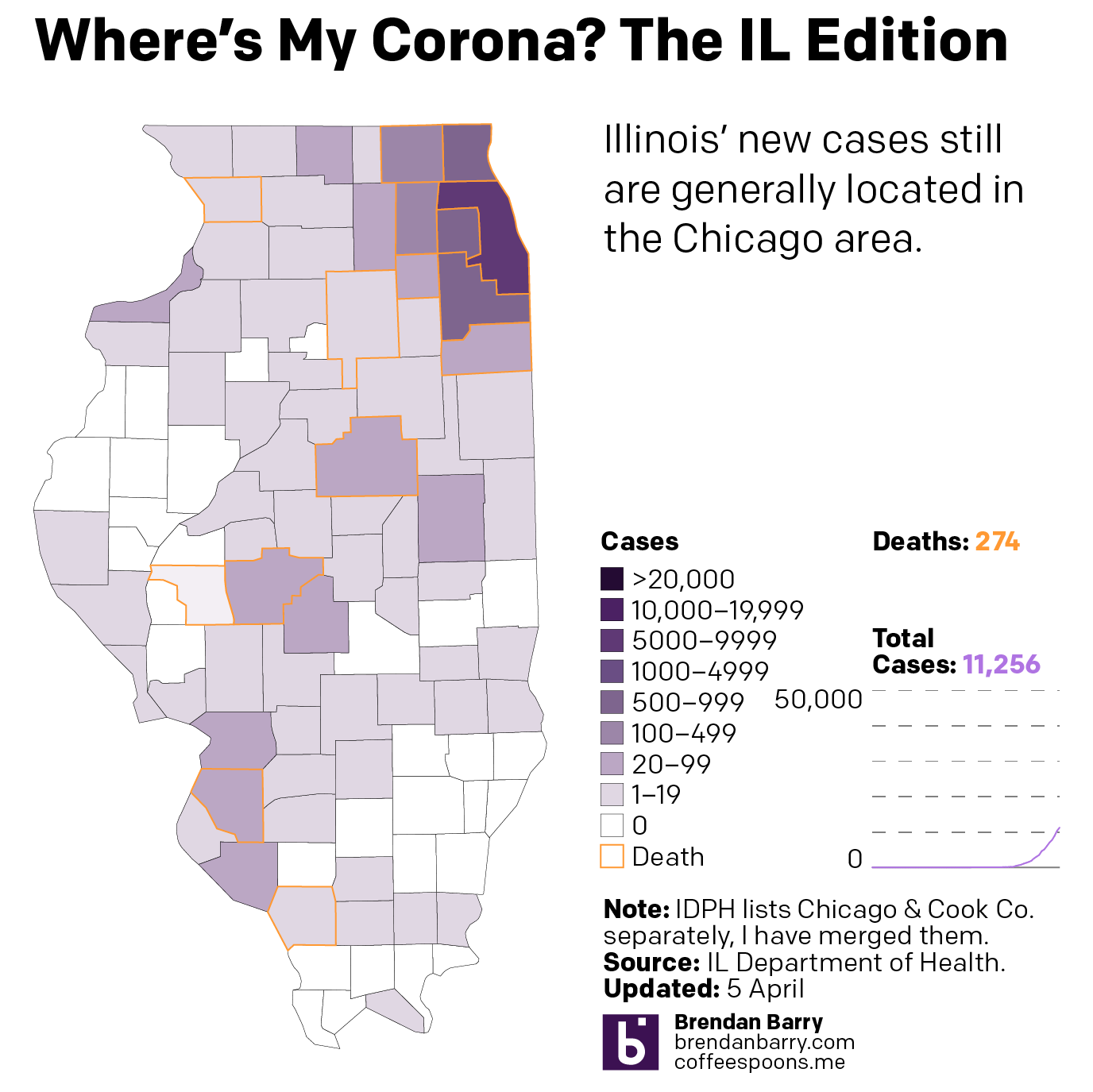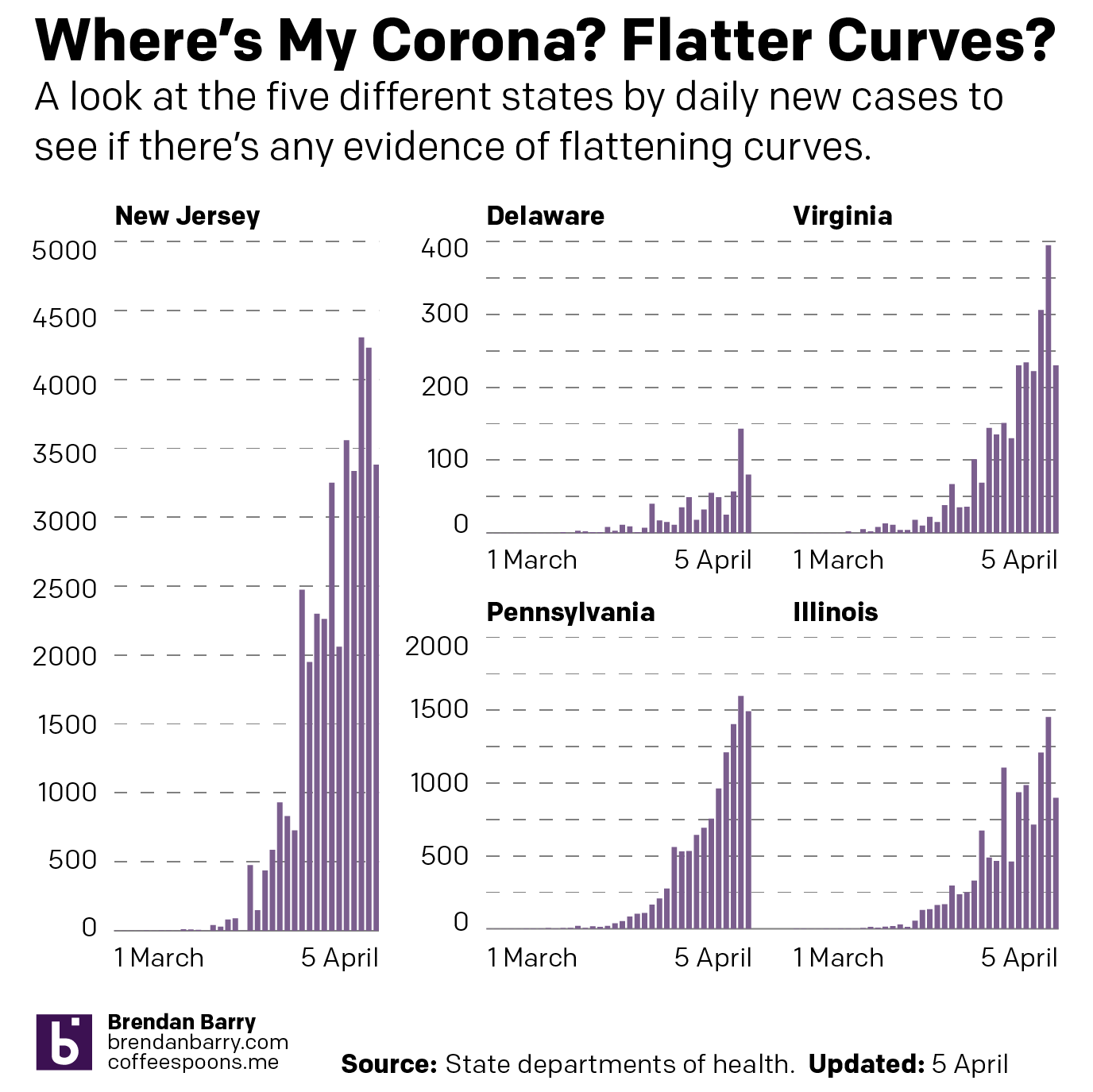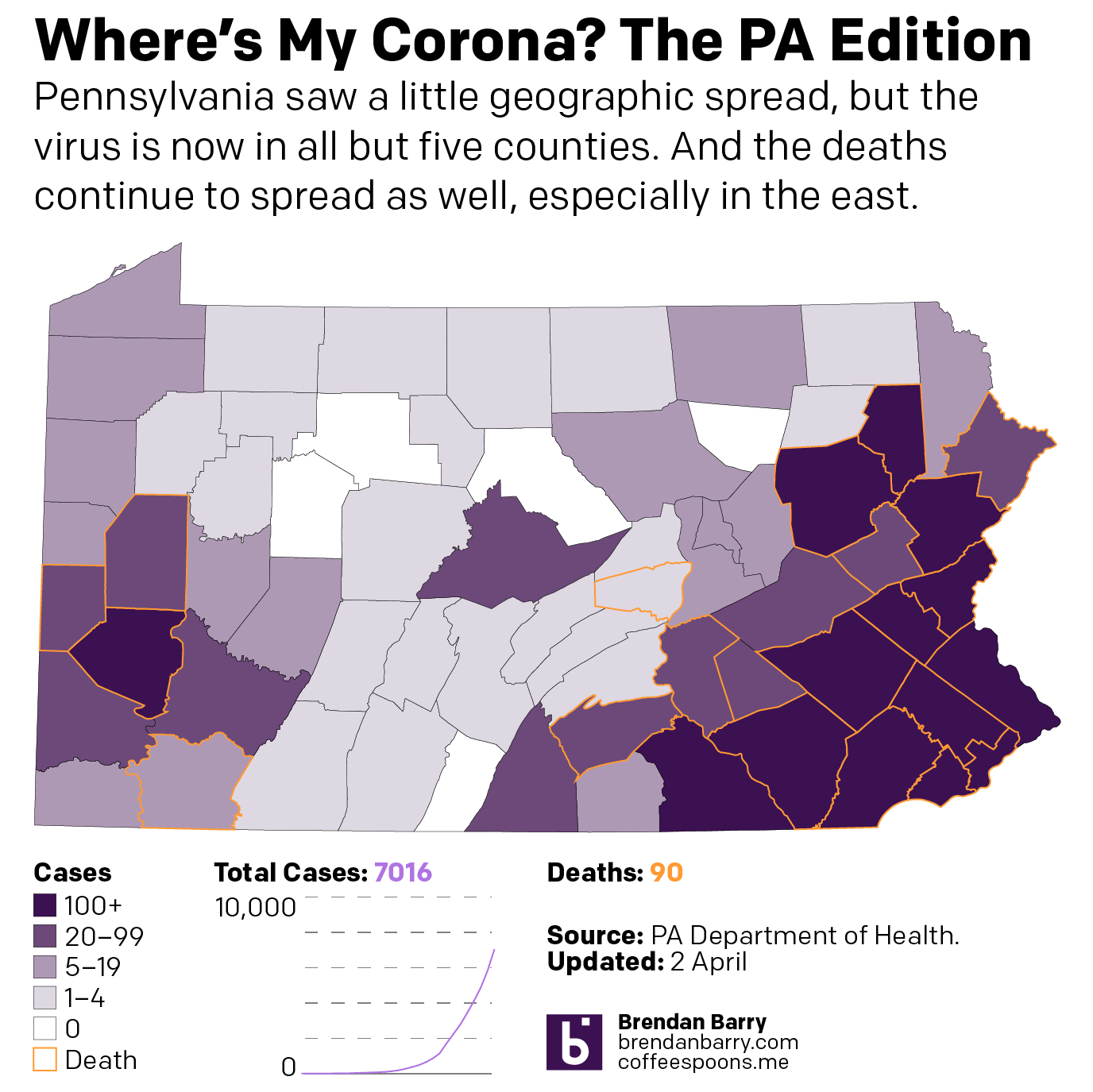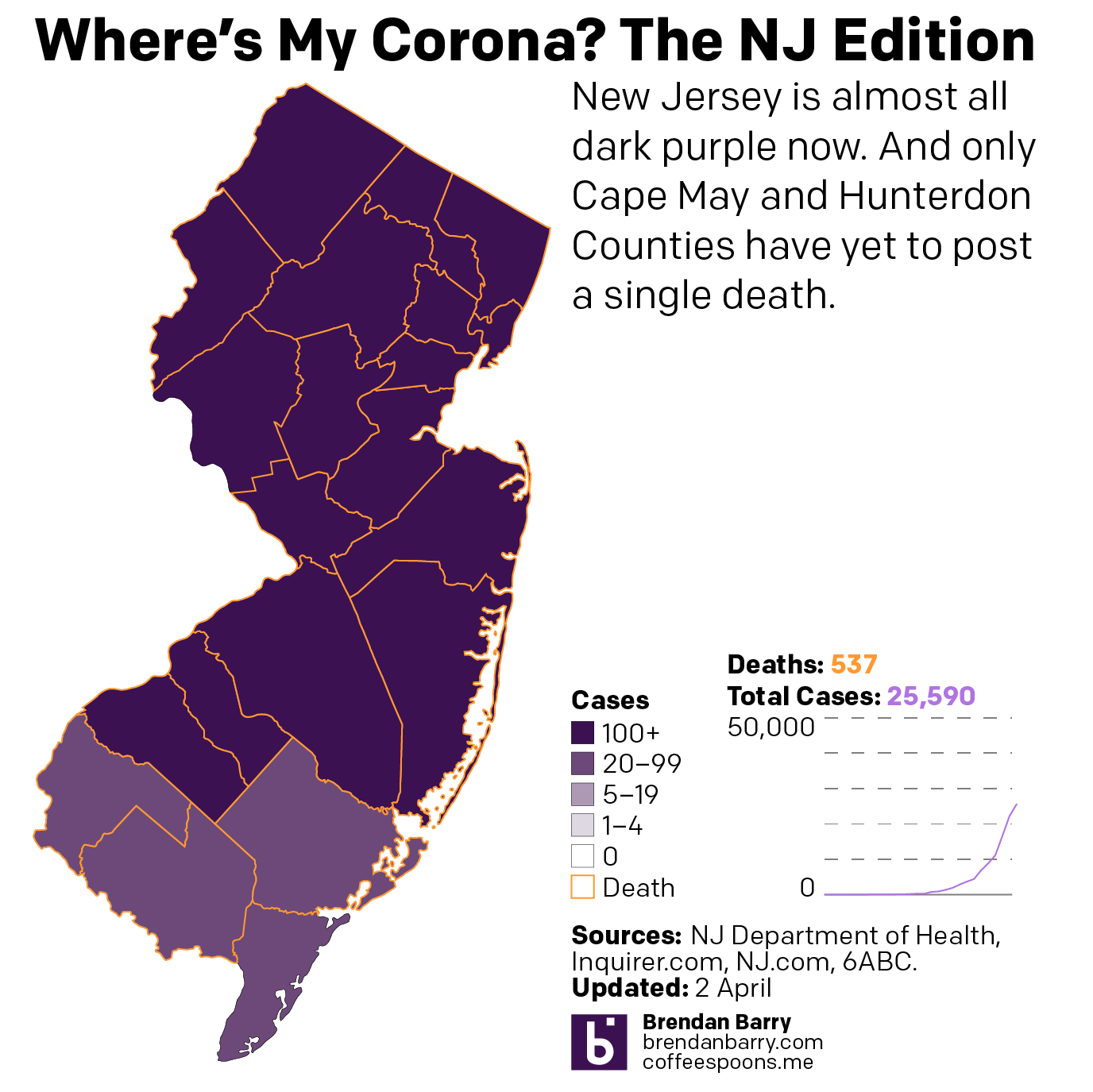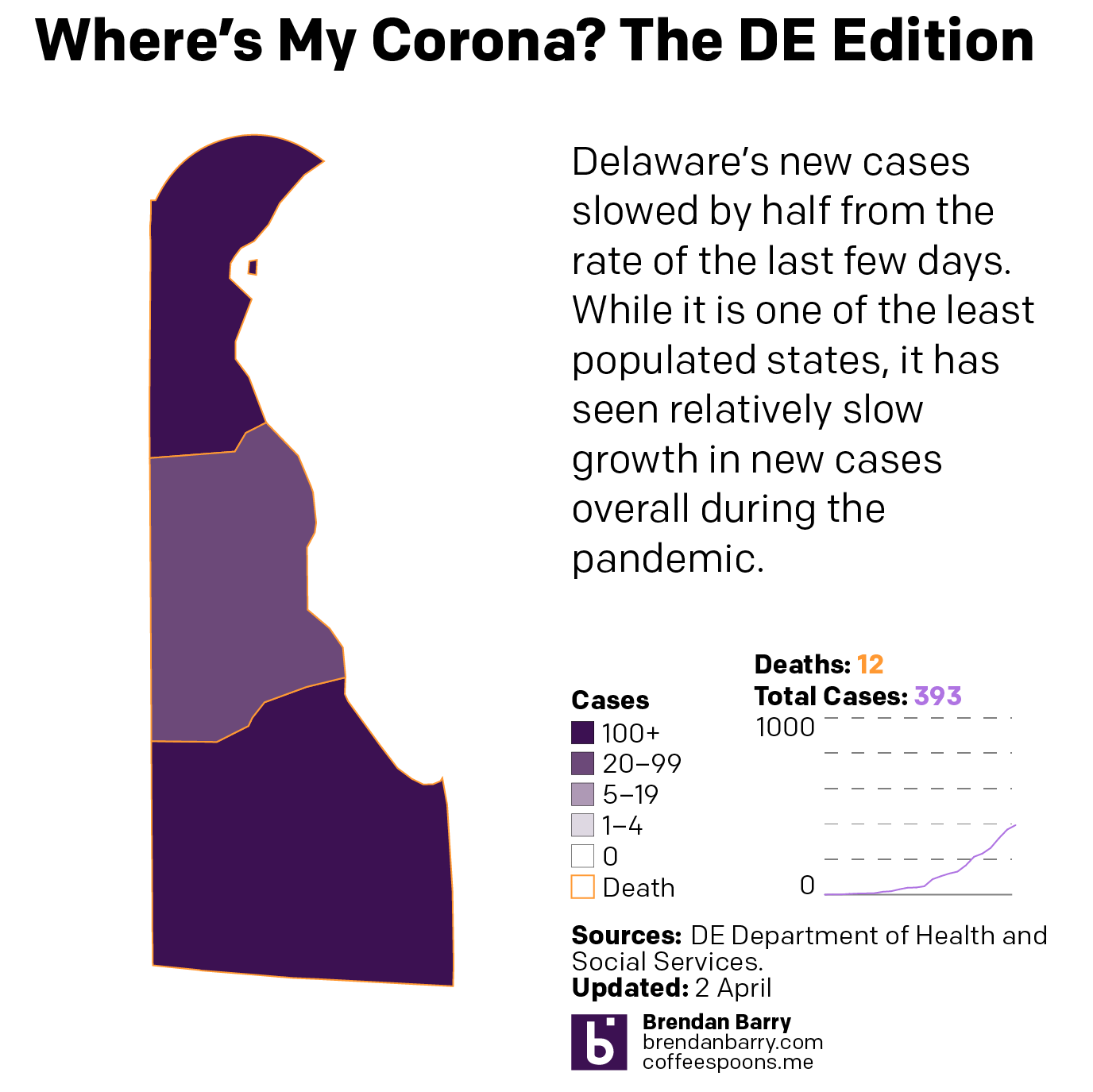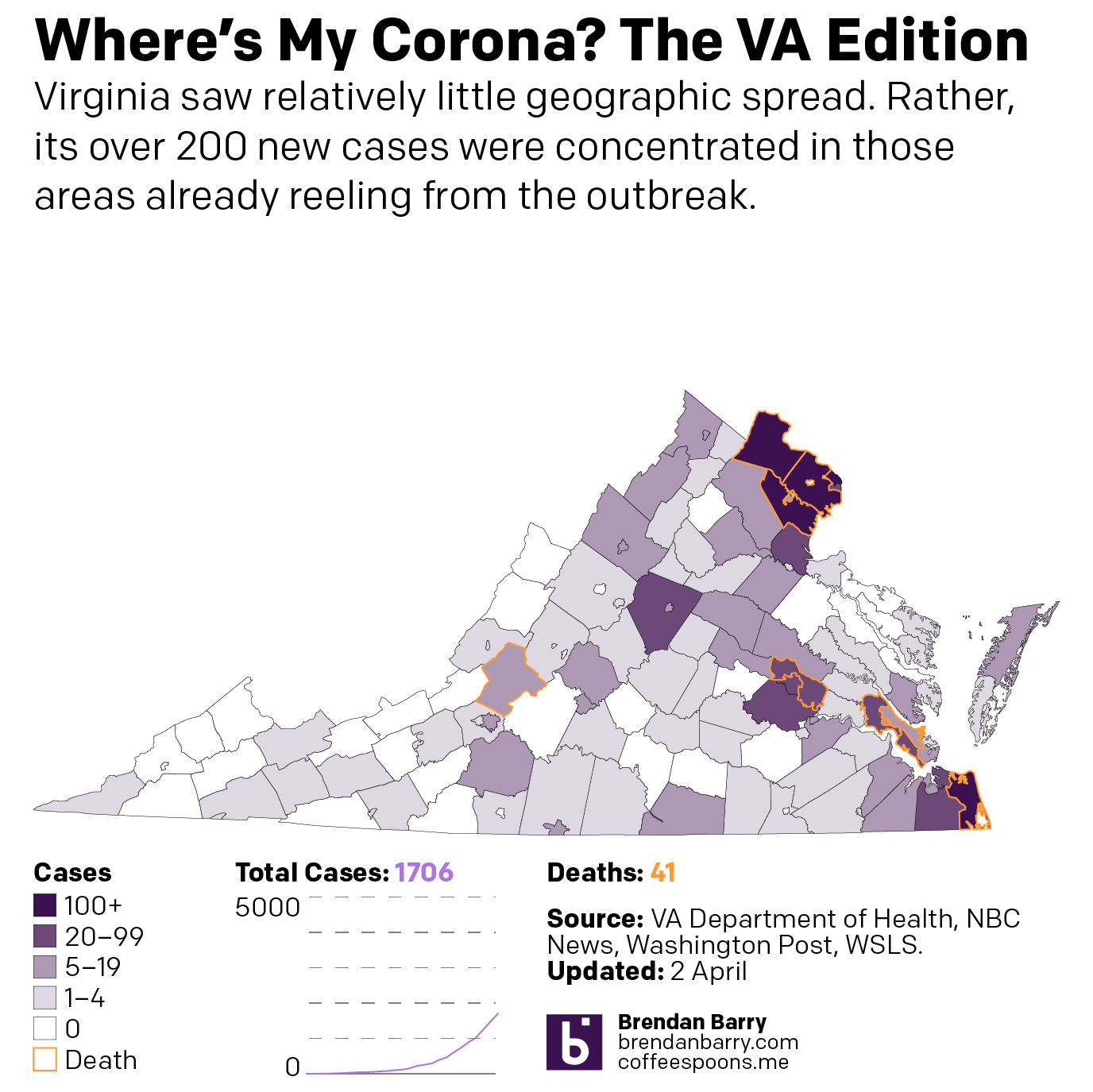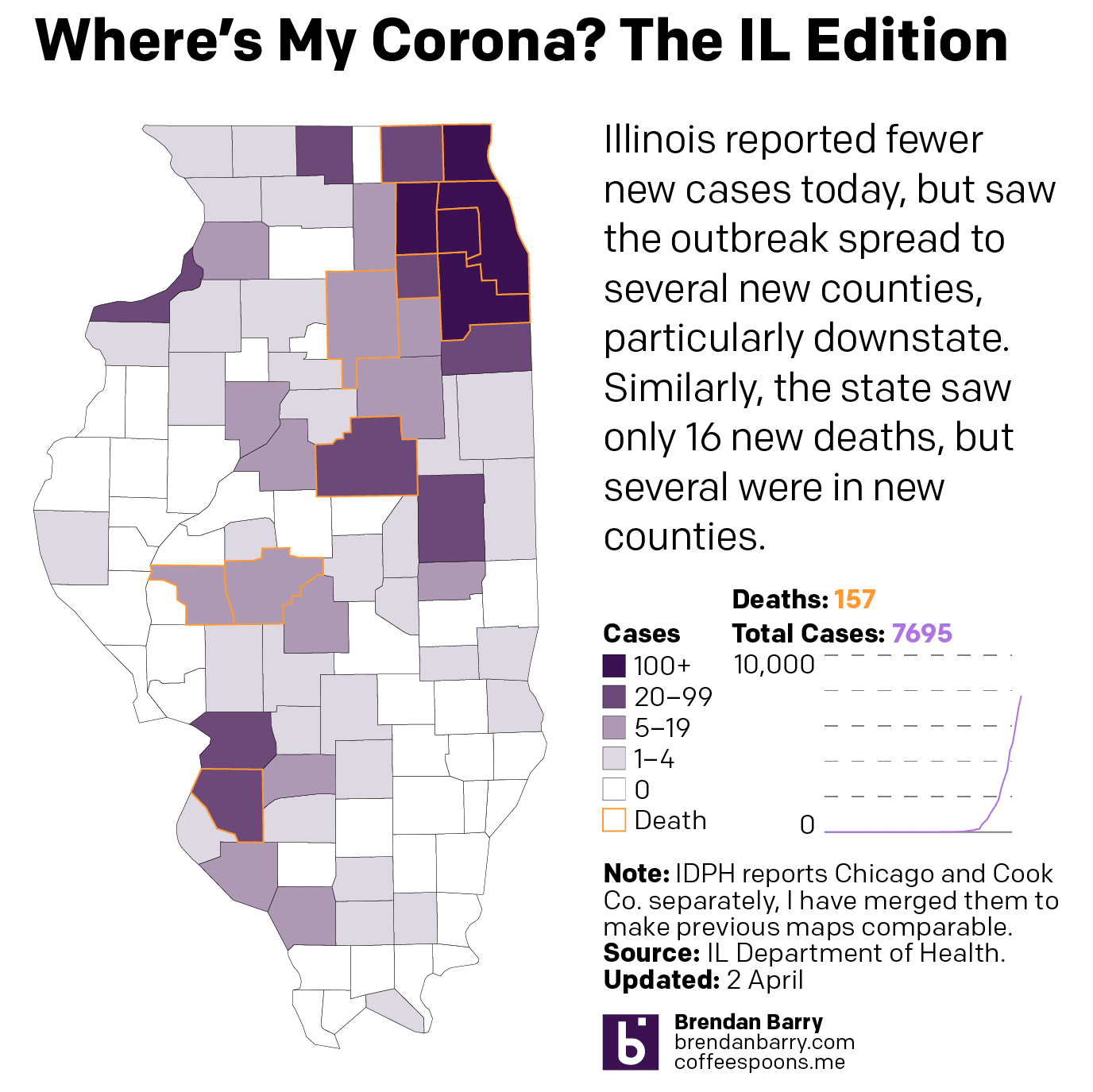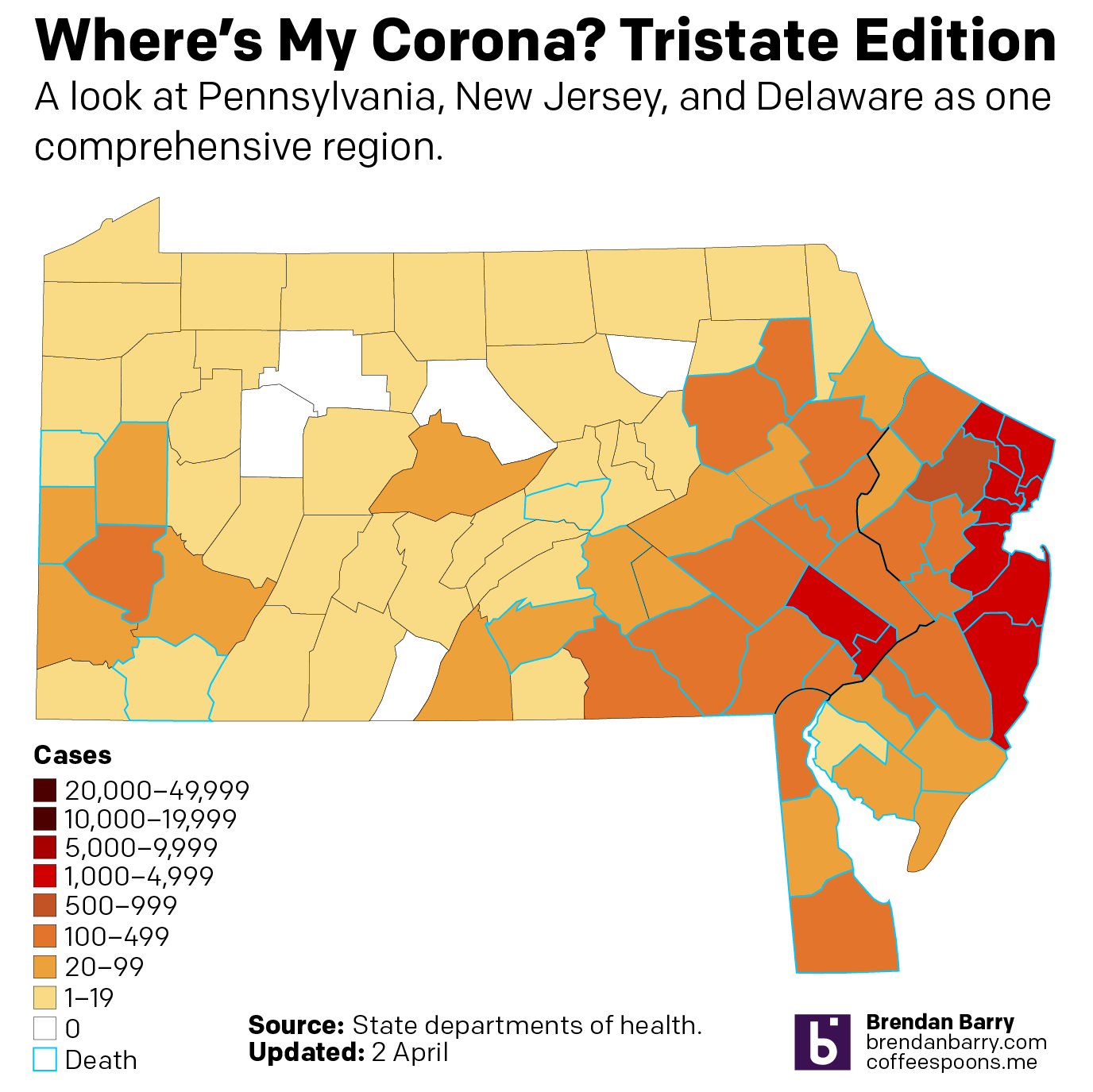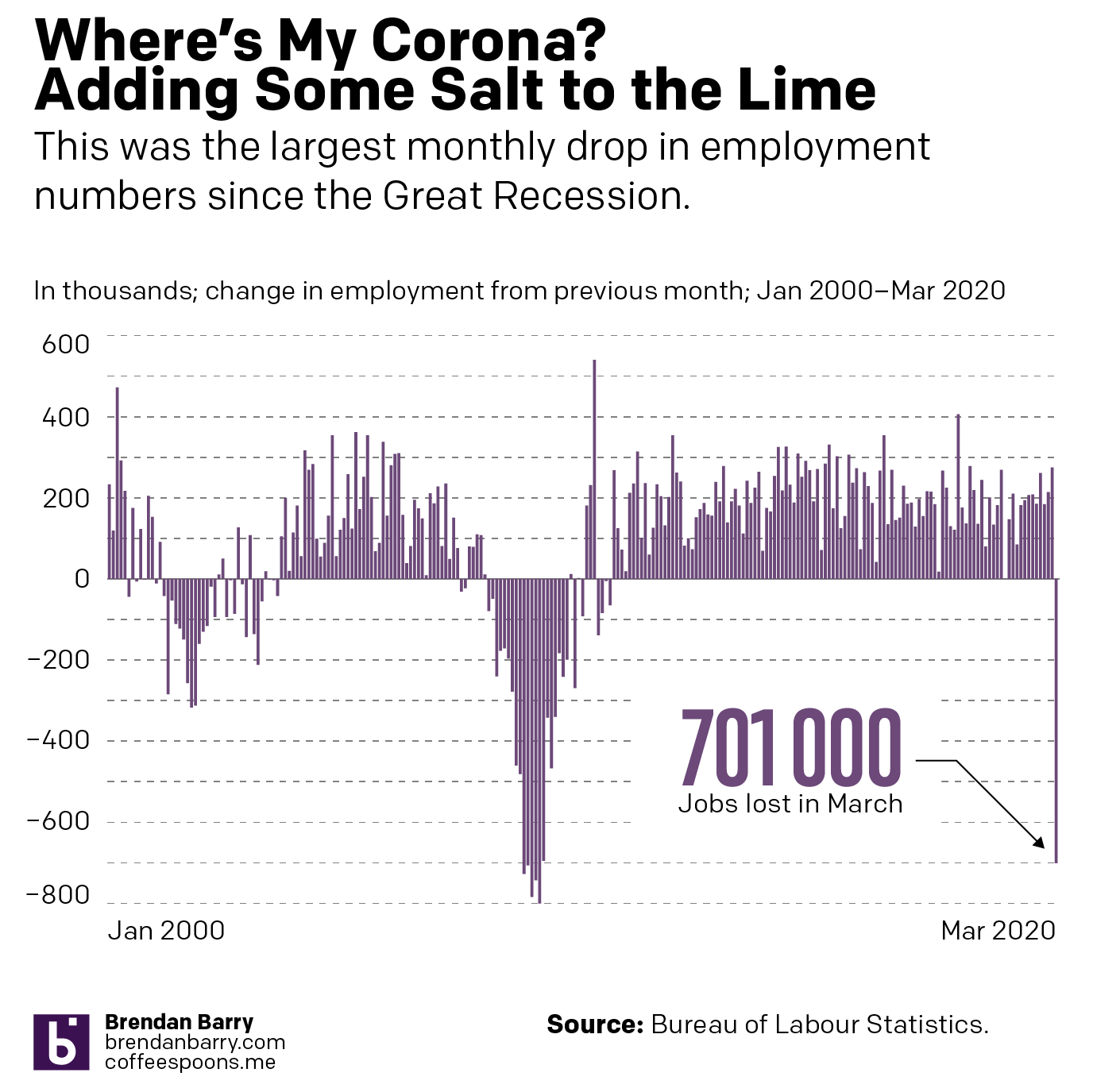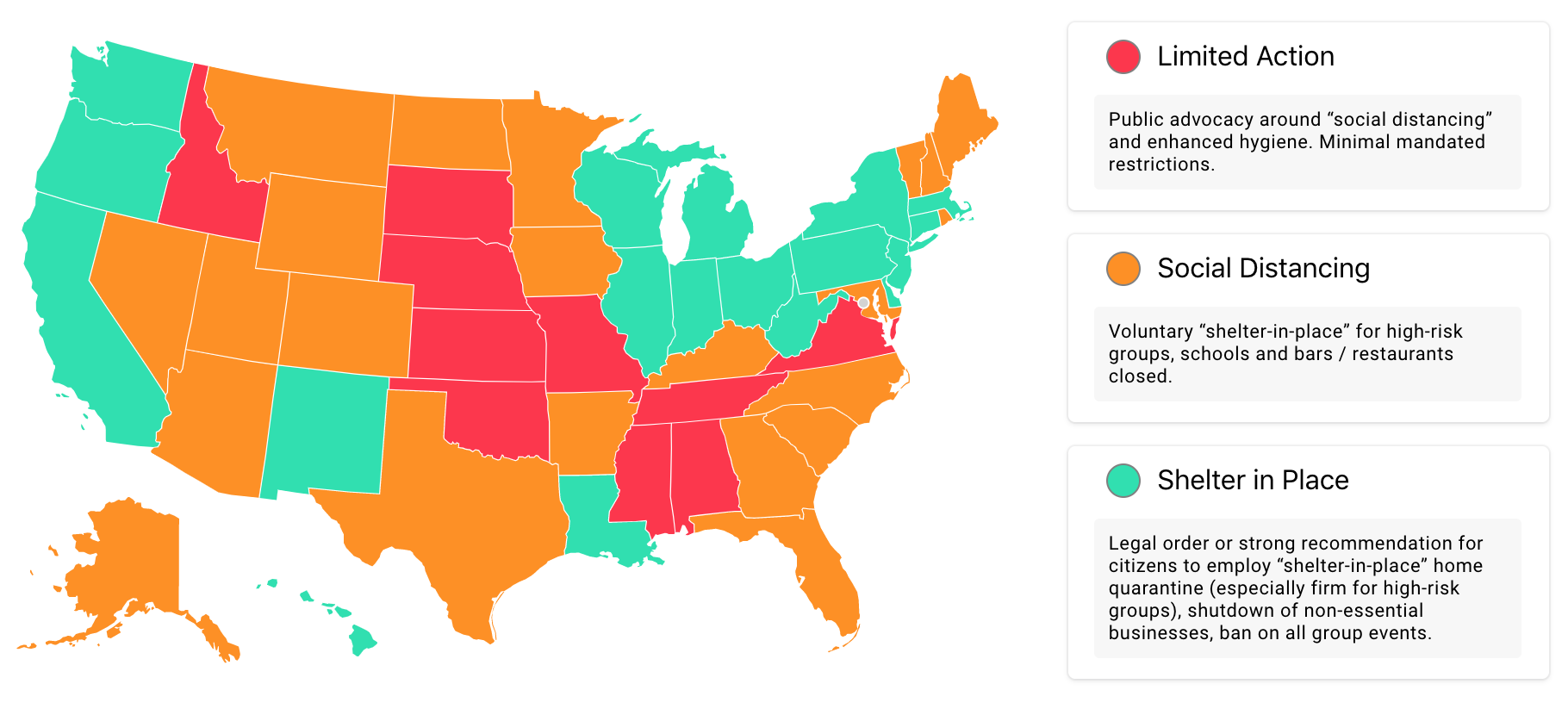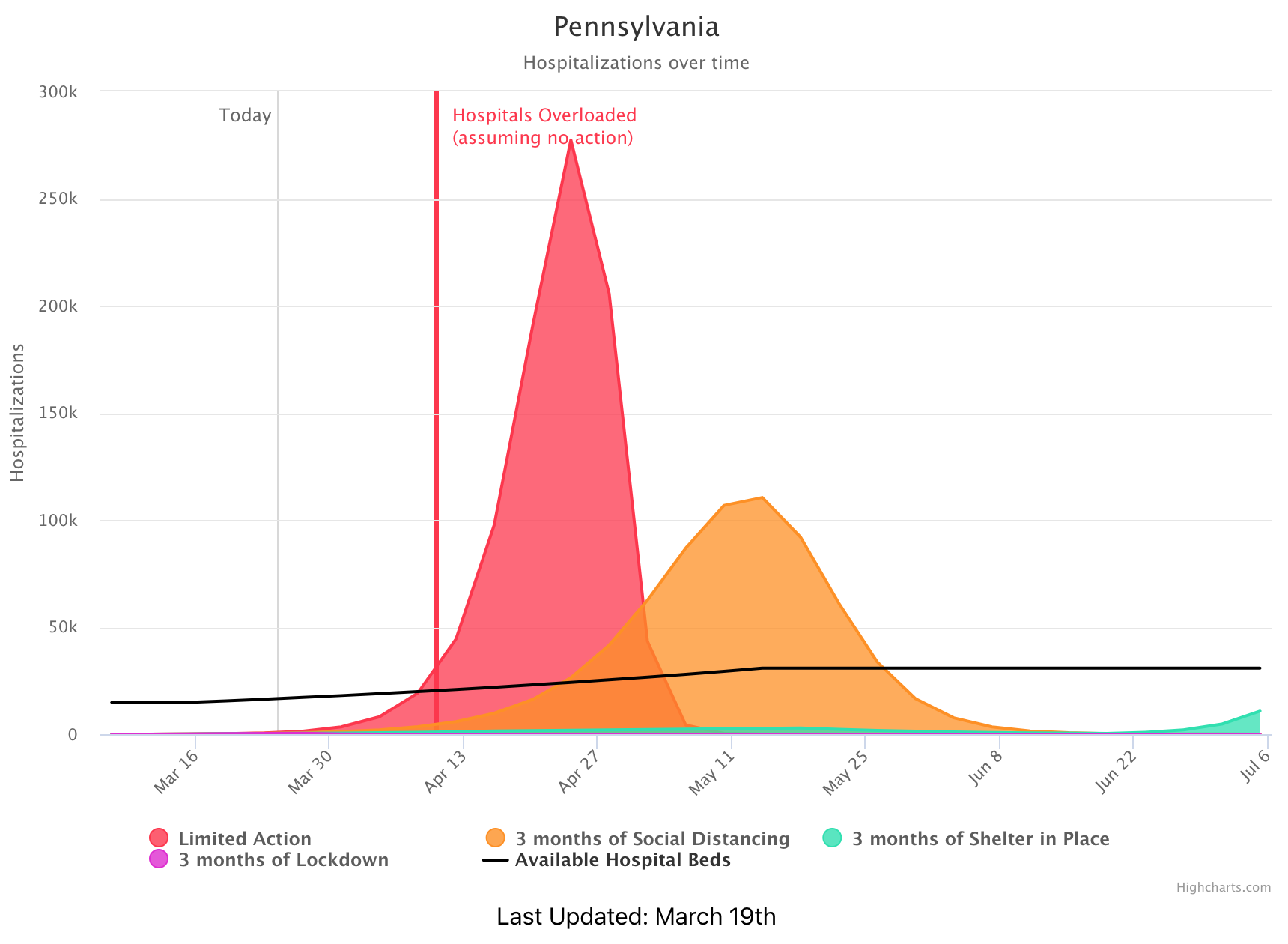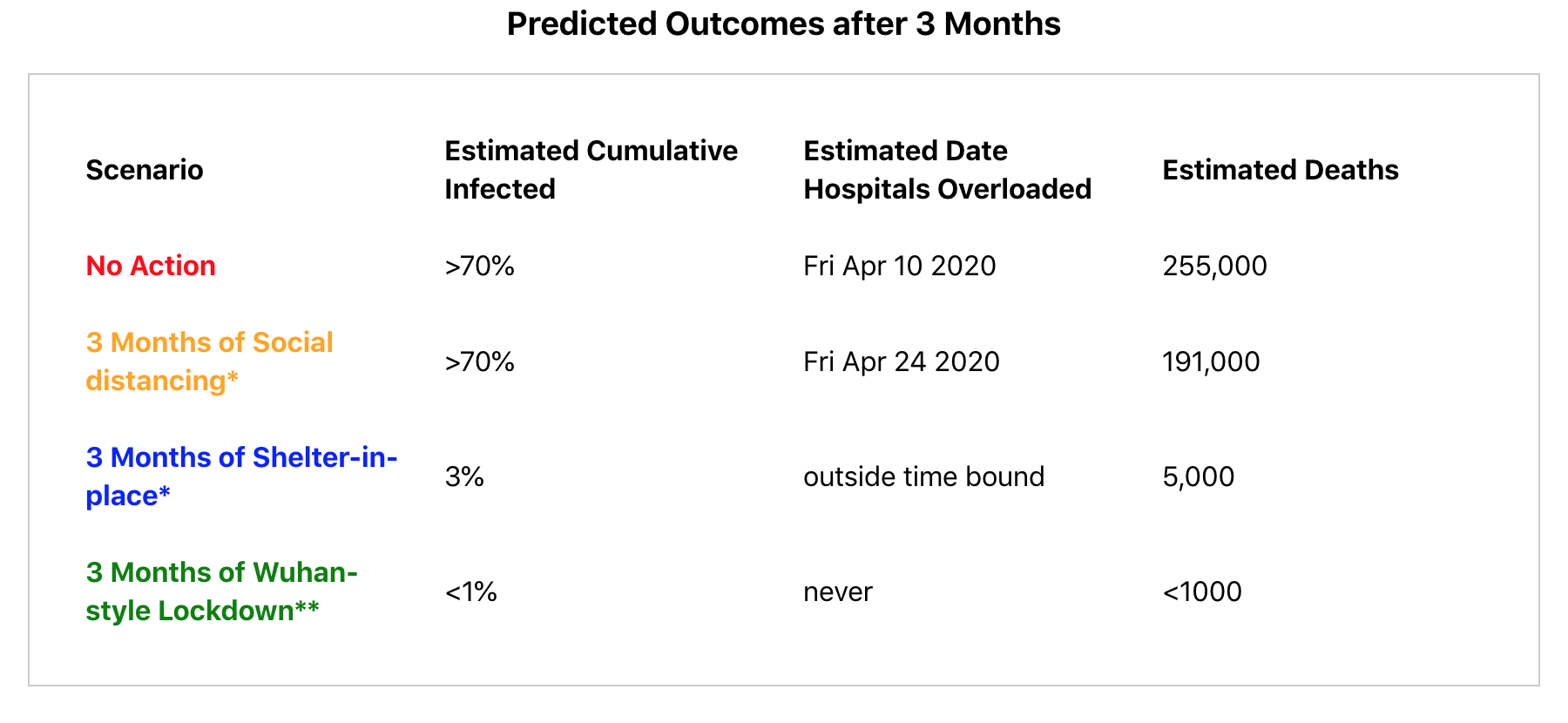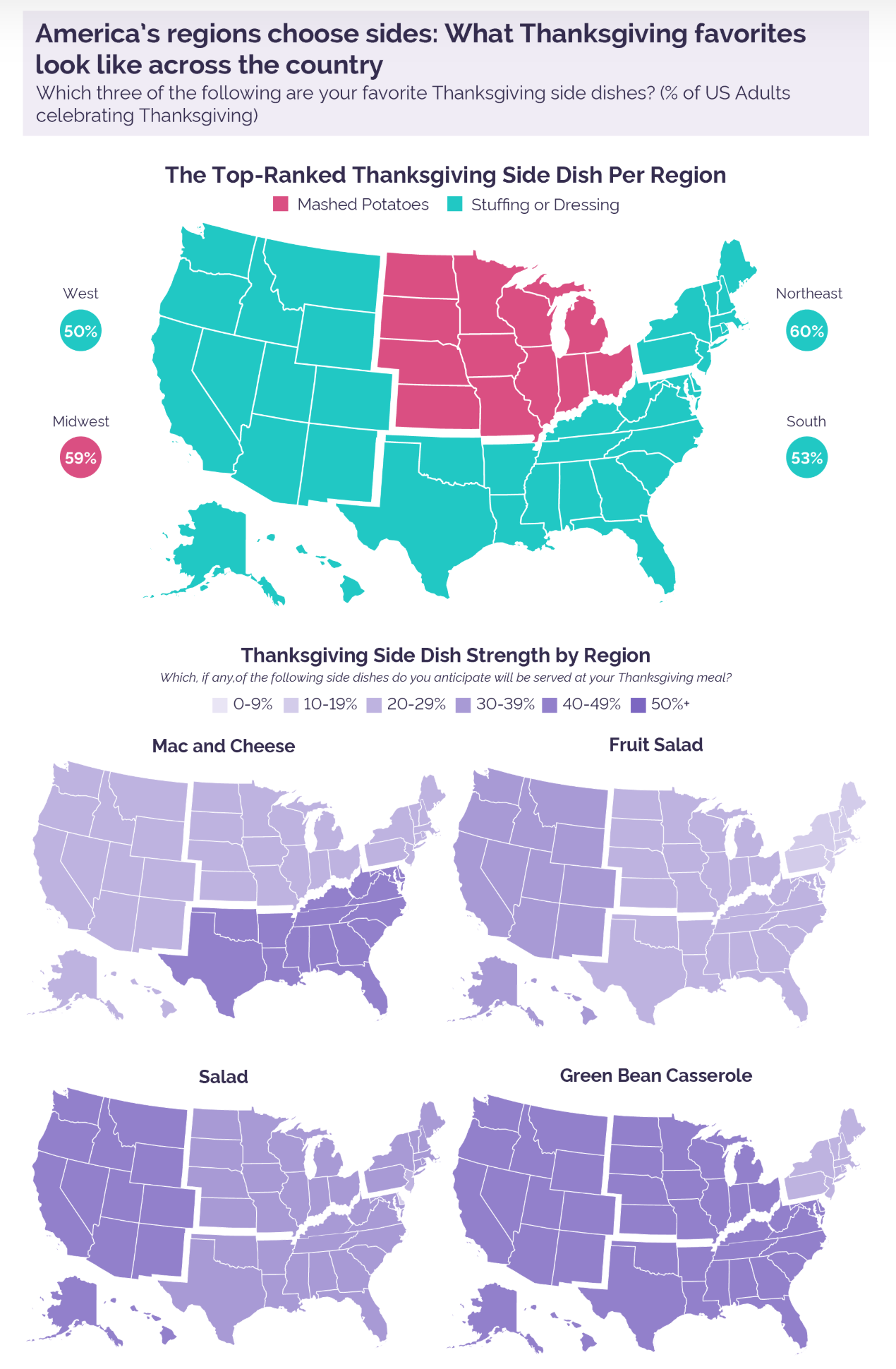I want to share a small graphic I made yesterday evening. And I am being charitable with the term graphic. Really it is nothing more than a collection of organised factettes. But I have seen the footage of those protesting the lockdowns in various states, including Pennsylvania.
To be clear, people can have different policy prescriptions to solve the pandemic. For example, the governor of Pennsylvania is considering lifting the lockdown piecemeal once the state overall has sufficient testing and tracing capabilities. Look at the state.
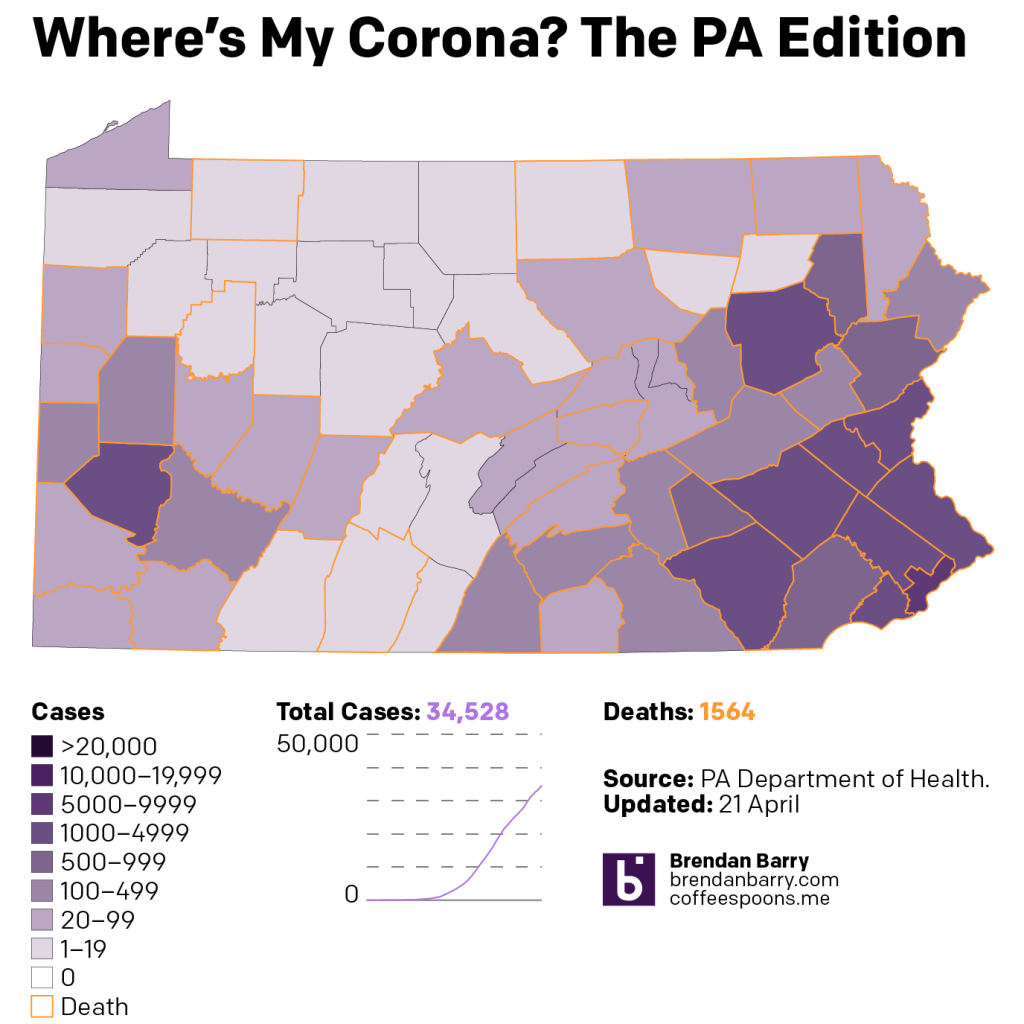
He rightly said that Cameron County, one of the little light purple shapes in the upper left, with its one case for the last 25 days is in a different situation than Philadelphia where cases continue to grow, albeit at a slowing rate. And in the future it is possible that Cameron County could open before Philadelphia. That is a different policy prescription than, say, opening the state all at once.
I don’t think most people enjoy lockdown—I haven’t left my building in 38 days and I cannot wait to leave and go do something. But I recognise that spreading outside these walls we have a deadly pandemic for which we have no vaccine. But then I see people protesting—protesting in a manner that contradicts the guidelines put out by the health officials—and claiming that we should open up because this is nothing worse than the flu.
Well, Covid-19 is not the flu. It is much worse.
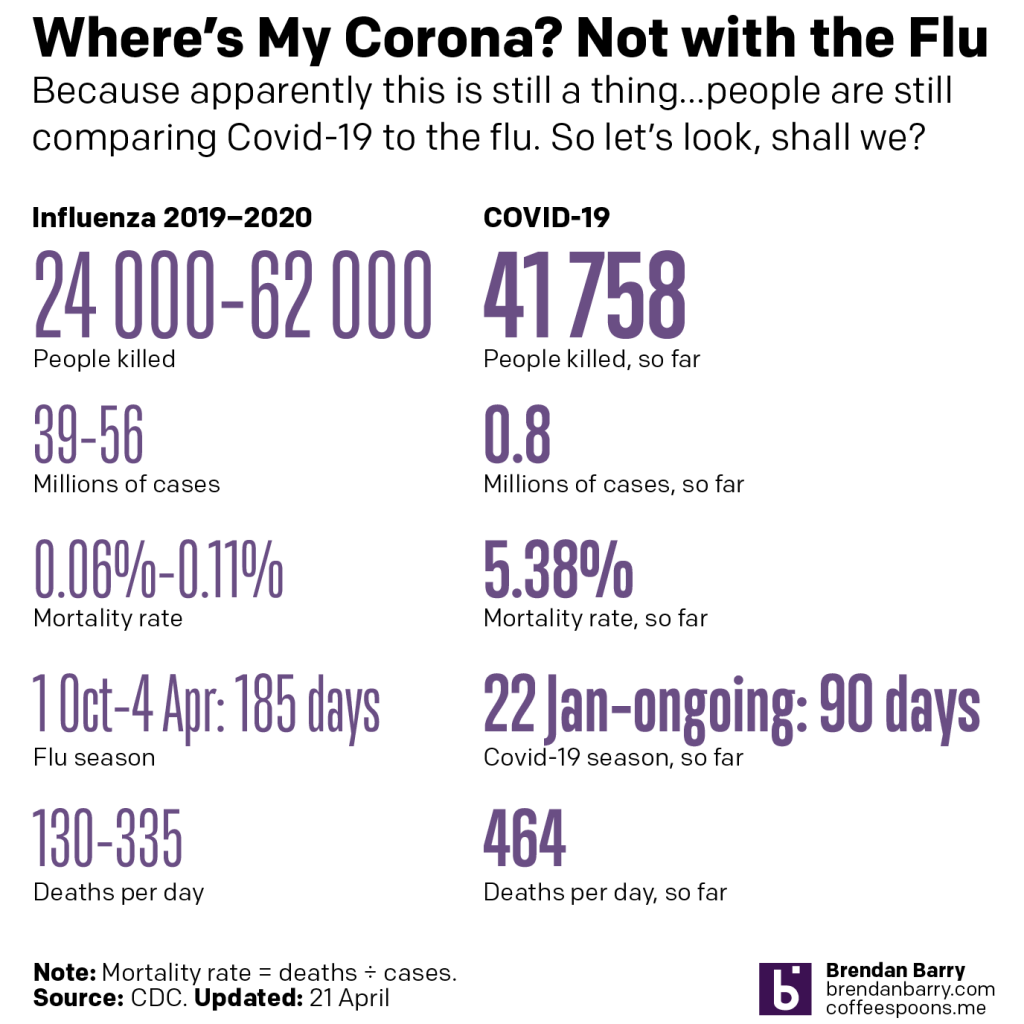
Now, those numbers will change because the pandemic is ongoing. But, let’s spitball. Let’s assume those numbers hold. The idea of the shutdowns, lockdowns, and quarantines is to prevent the spread of the virus. For the sake of this thought experiment, let’s just assume, however, that it infects 56 million people, the upper end of the range for this most recent influenza season.
Influenza this year killed as many as 62,000 people after infecting 56 million. Hypothetically, with a mortality rate of 5%, Covid-19 would kill 2,800,000 people.
With a 4% rate that drops to 2,240,000
With a 3% rate that drops to 1,680,000
With a 2% rate that drops to 1,120,000
With a a 1% rate that drops to 560,000
With a 0.5% rate that drops to 280,000
And even at 0.5% that is still far greater than the flu. And so that is why it is so important to keep the number of people infected as low as possible. (And I won’t even get into the surge problems overwhelming hospitals that acts as a force multiplier and is the proximate reason for the lockdowns.)
This is not the flu.
Credit for the piece is mine.

